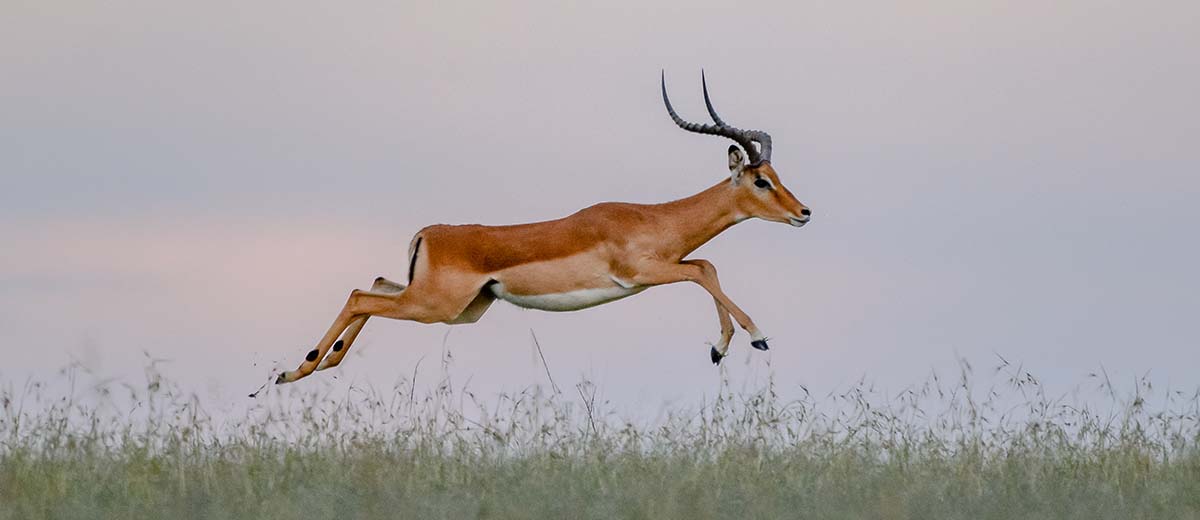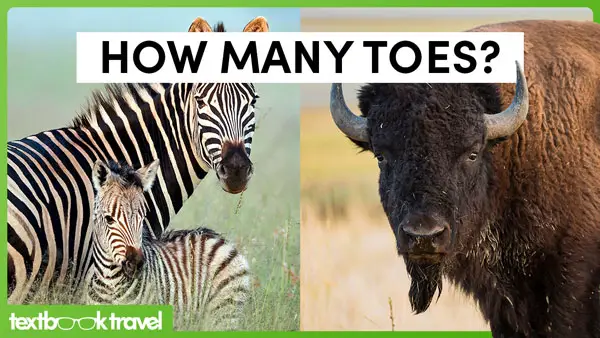All 13 Types of Ungulate (Odd/Even-Toed &… Whales?)
Ungulates are a large clade of animals found on every corner of the earth. The word ungulate means “having hooves” and animals are split between odd-toed individuals including tapirs and rhinos, and even-toed individuals, which include bovids, giraffes, regular deer, mouse deer and, rather bizarrely, whales who are the closest extant relatives to the hippopotamus, another ungulate. Let’s dive in!
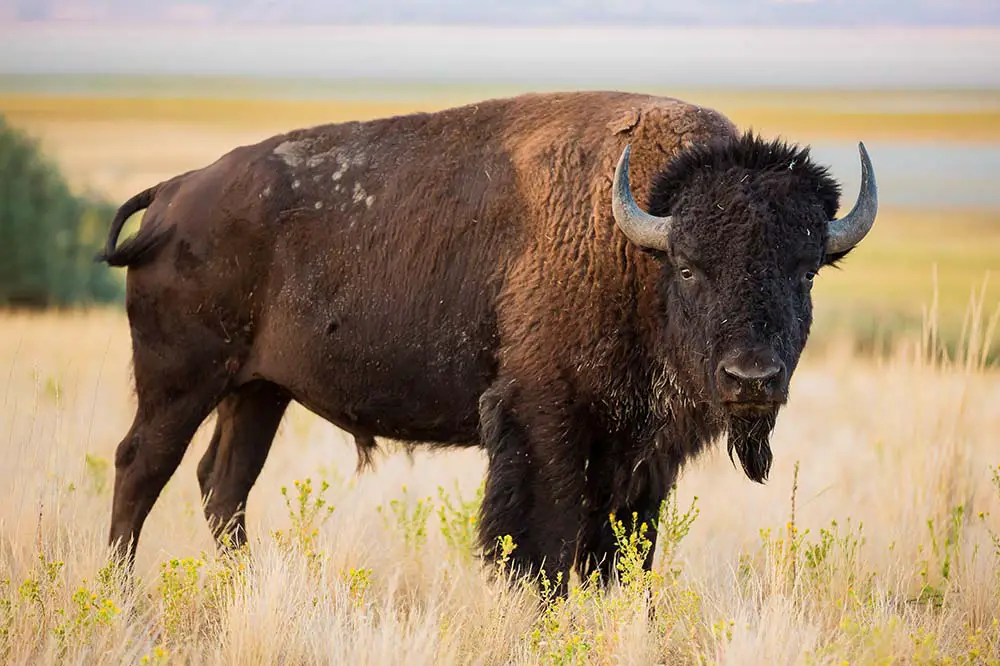
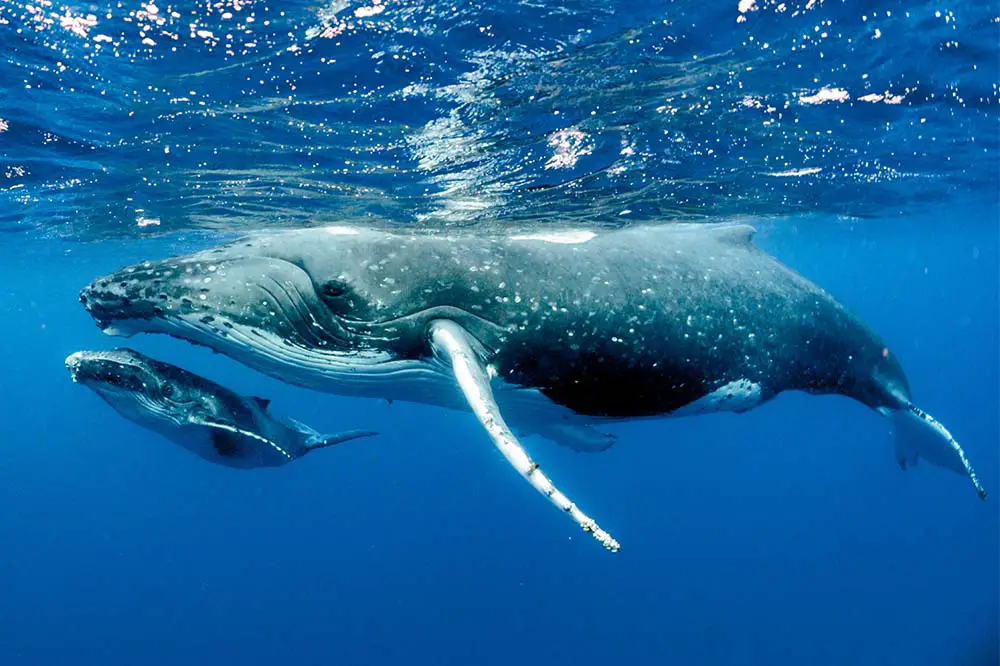
Left: American Bison | O.S. Fisher/Shutterstock & Right: Humpback Whales | Imagine Earth Photography/Shutterstock
Contents
- Odd Toed Ungulates
- 01 – Rhinocerotidae | Rhinos
- 02 – Tapiridae | Tapirs
- 03 – Equidae | Horses
- Even Toed Ungulates
- 04 – Camelidae | Camels
- 05 – Suina | Pigs
- Cetruminantia Split & Whippomorpha
- 06 – Cetacea | Whales
- 07 – Hippopotamidae | Hippos
- Ruminantia
- 08 – Tragulidae | Mouse Deer
- 09 – Antilocapridae | Pronghorn
- 10 – Giraffidae | Giraffes
- 11 – Cervidae | Deer
- 12 – Moschidae | Musk Deer
- 13 – Bovidae | Bovids
Odd Toed Ungulates
Odd-toed ungulates are housed within the order Perissodactyla, which contains three families; equids, rhinos and tapirs. They are characterized by having an odd number of functional toes; equids have a single toe, whereas rhinos and tapirs have three.
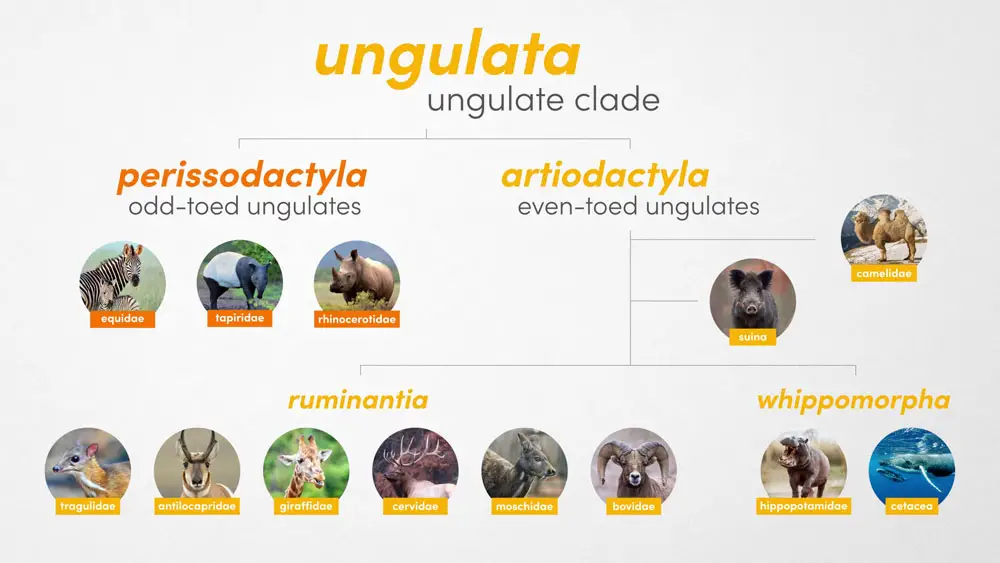
01 – Rhinocerotidae | Rhinos
Rhinocerotidae contains 5 species, commonly referred to as rhinos. The most well-known of the species, black and white rhinos are found in sub-Saharan Africa but a further three species exist in Asia: the Indian rhino, the Javan rhino and the Sumatran rhino. All species have horns that are used primarily for self-defence but are also used for foraging. Black, white and Sumatran rhinos have two horns whereas Indian and Javan rhinos have only one.
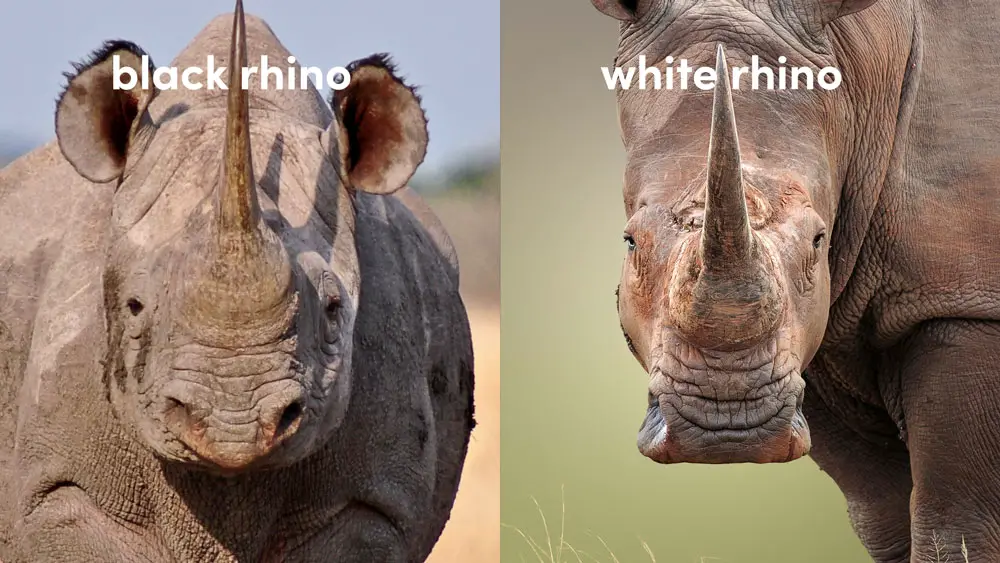
Unlike their names would suggest, Africa’s black and white rhinos are not named so due to a difference in skin colour but can be differentiated in several ways. The shape of their upper lip is more v-shaped in black rhinos and flatter in white rhinos and they also vary drastically in size with male white rhinos weighing a whopping 8000 lb (3600 kg) in comparison to the black rhino, which weighs a mere 3000 lb (1400 kg). Of the Asian species, Indian and Javan rhinos are quite distinct, sporting an armour plated-like appearance.
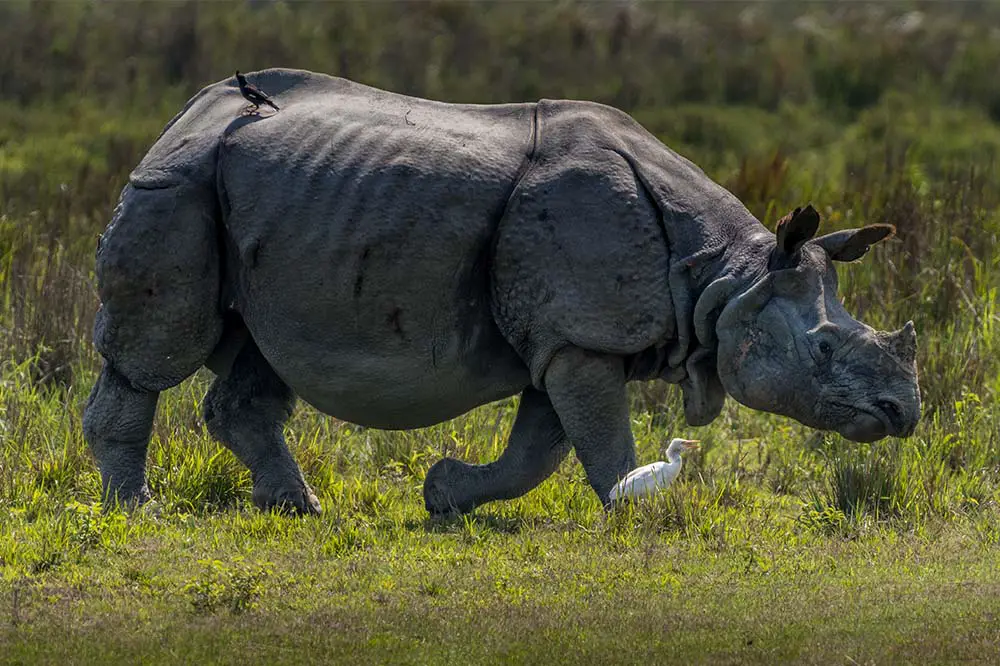
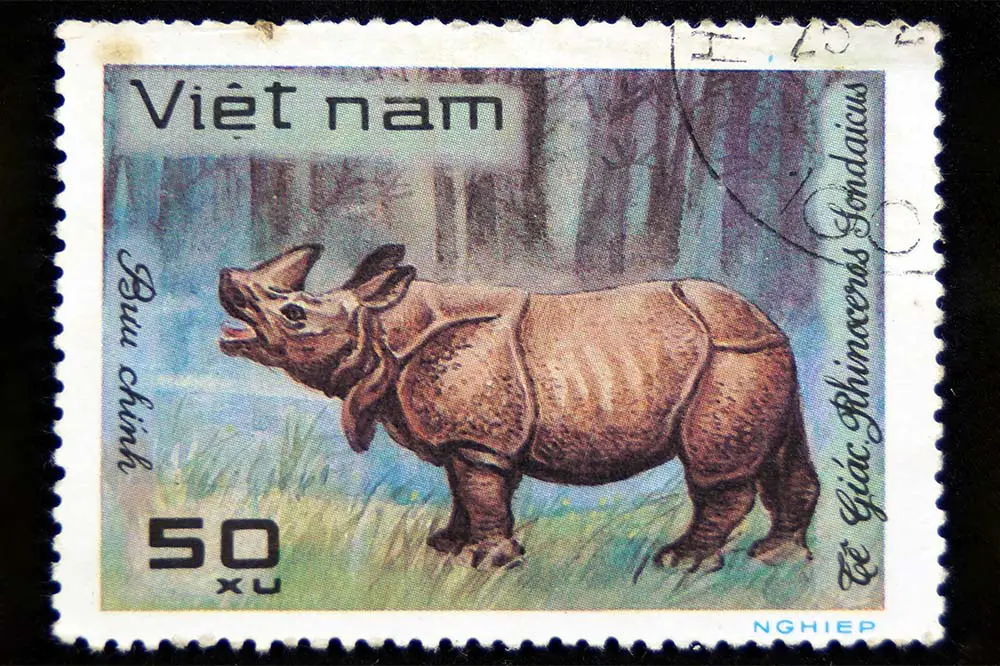
Left: Indian Rhinoceros in Kaziranga National Park, India | NileshShah/Shutterstock & Right: Javan Rhino on a postage stamp printed in the USSR | Shutterzomb/Shutterstock
02 – Tapiridae | Tapirs
The last of the odd-toed ungulate family, Tapiridae contains four species of Tapir. The Baird’s tapir, the South American tapir and the Mountain tapir all exist in Central & South America with the remaining species, the Malayan tapir found throughout southern Thailand, the Malay peninsular, and the Indonesian island of Sumatra. Tapirs are herbivorous and are known to have flexible snouts, which they used to collect foliage. The largest of the four species, the Malayan tapir exhibits a unique colouration and can weigh almost 1200lbs (1189lbs/540kg).
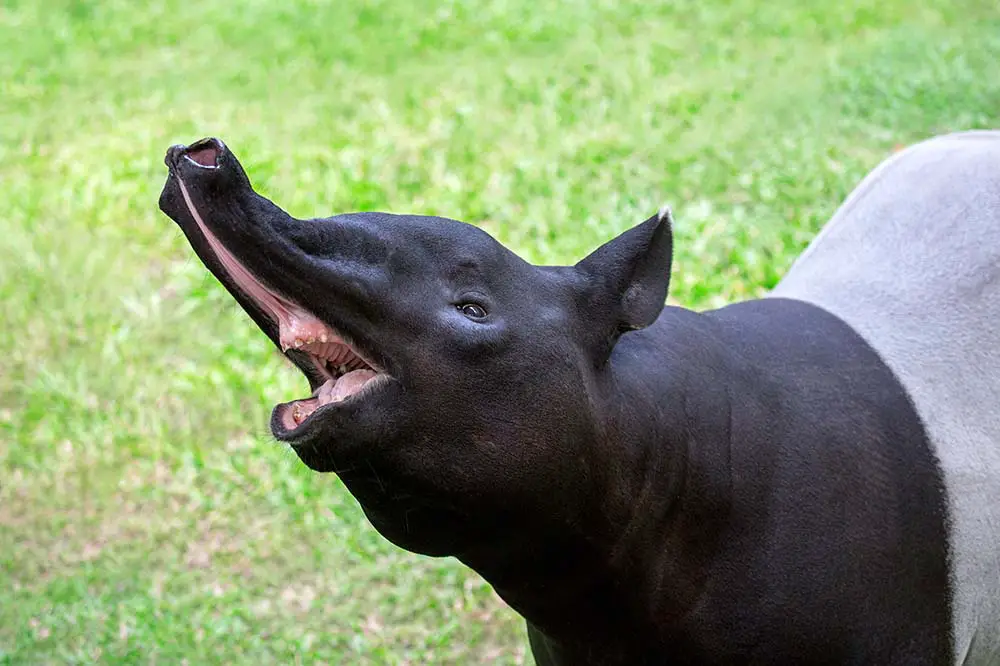
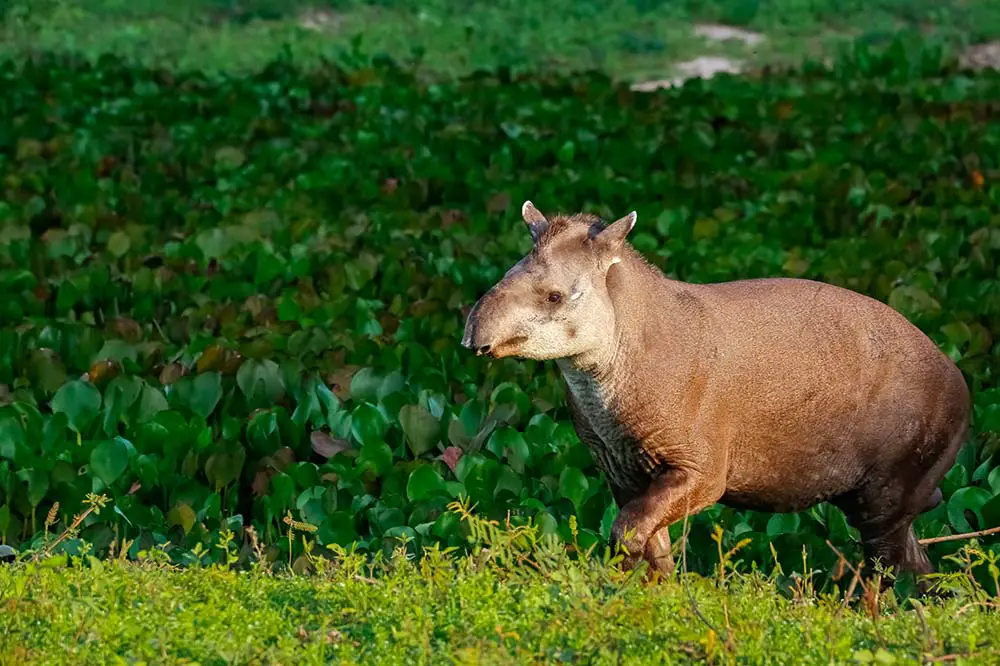
Left: Malayan tapir | jeep2499/Shutterstock & Right: Baird’s tapir in Corcovado National Park, Costa | Rica Salparadis/Shutterstock
Although the three South American species are significantly smaller, they are still the largest native land mammal on the continent with some male tapirs weighing up to 660lbs (300kg). Perhaps their most interesting characteristic is the colour pattern of their young; regardless of species, calves have white stripes across their bodies, which grow out of as they age. In addition, Malay tapir calves appear to be significantly darker than their South American cousins.
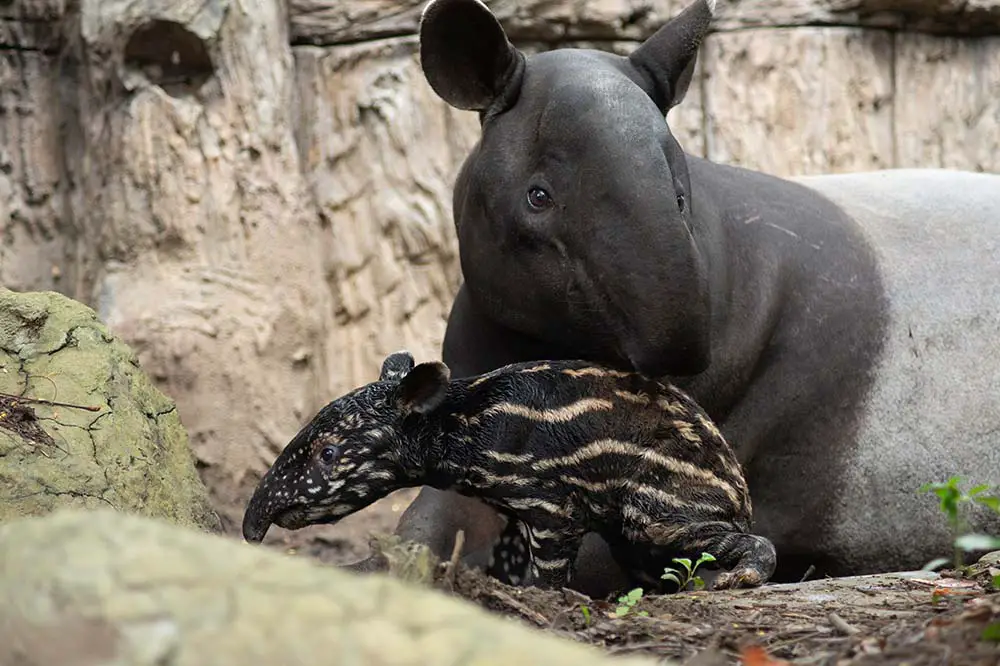
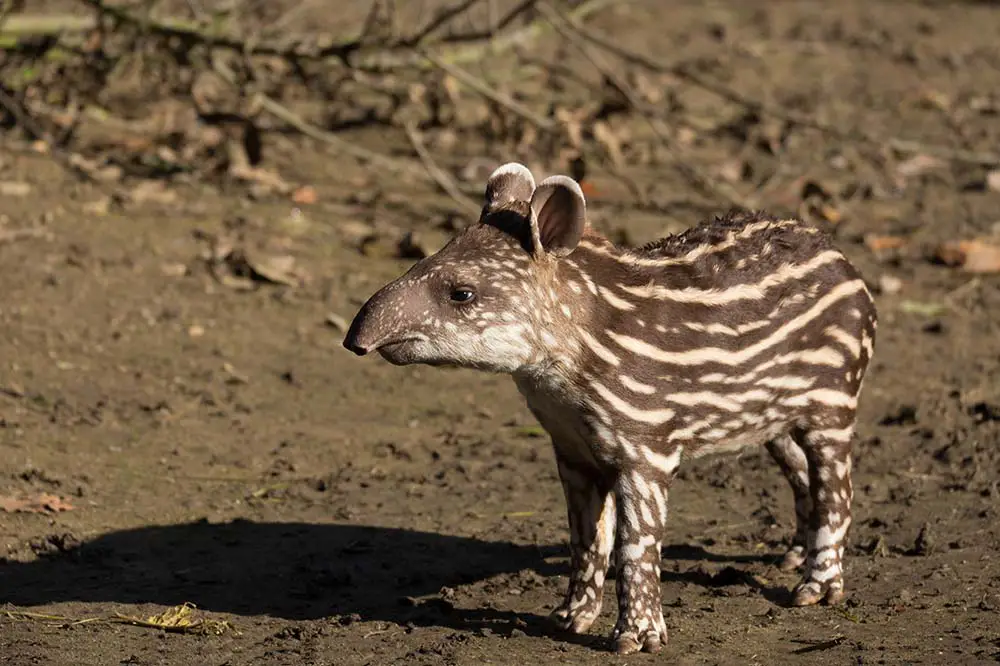
Left: The first hour of the birth of the Malay tapir | J.Natayo/Shutterstock & Right: Baby of the endangered South American tapir | Artush/Shutterstock
03 – Equidae | Horses
The Equidae family contains 7 species, which includes horses, asses, and zebras. While there are certain breeds of domesticated horse that exceed this size (e.g. Shire Horse – 2425lbs / 1100kg), the largest wild equid is the Grévy’s zebra, which stands up to 5.2 feet (1.6m) at the base of the neck and weighs close to 900lbs / 409kg. They are found in east Africa in the countries of Ethiopia and Kenya, where they are currently endangered. The plains zebra is slightly smaller and although they are much more common with a larger range stretching into southern Africa, they are also endangered.
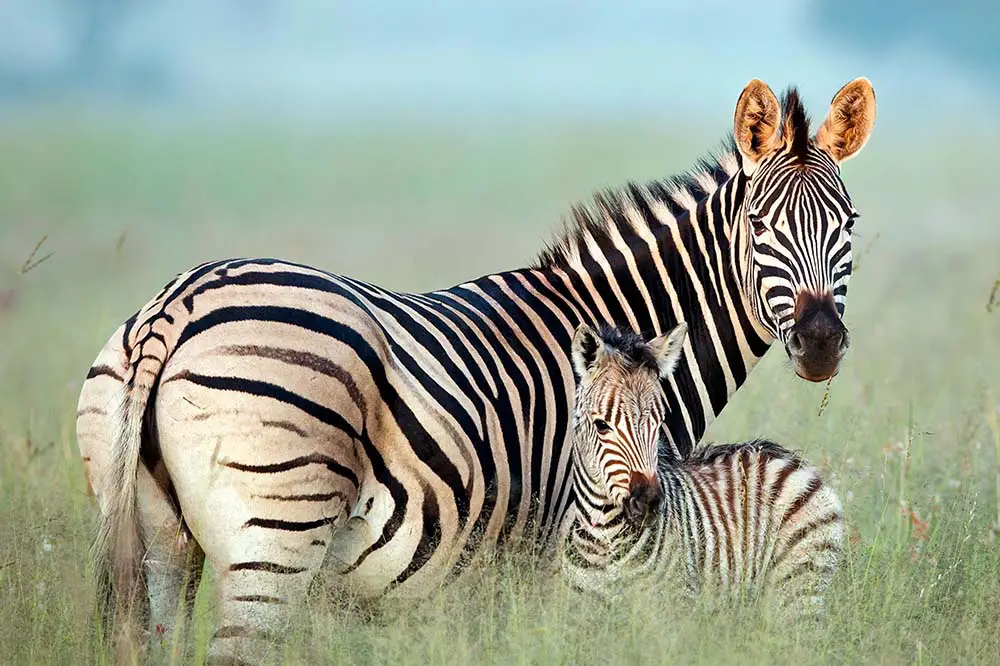
The African wild ass is one of three asses in the Equidae family. The Somali wild ass is a particularly beautiful subspecies, exhibiting the same colouration as zebras on their legs with a light grey body with a white belly, muzzle and chin. The species Equus ferus is split into two subspecies; the domesticated horse and the Przewalski’s horse. The latter is found on the steppes of Mongolia and is said to be the last truly wild horse.
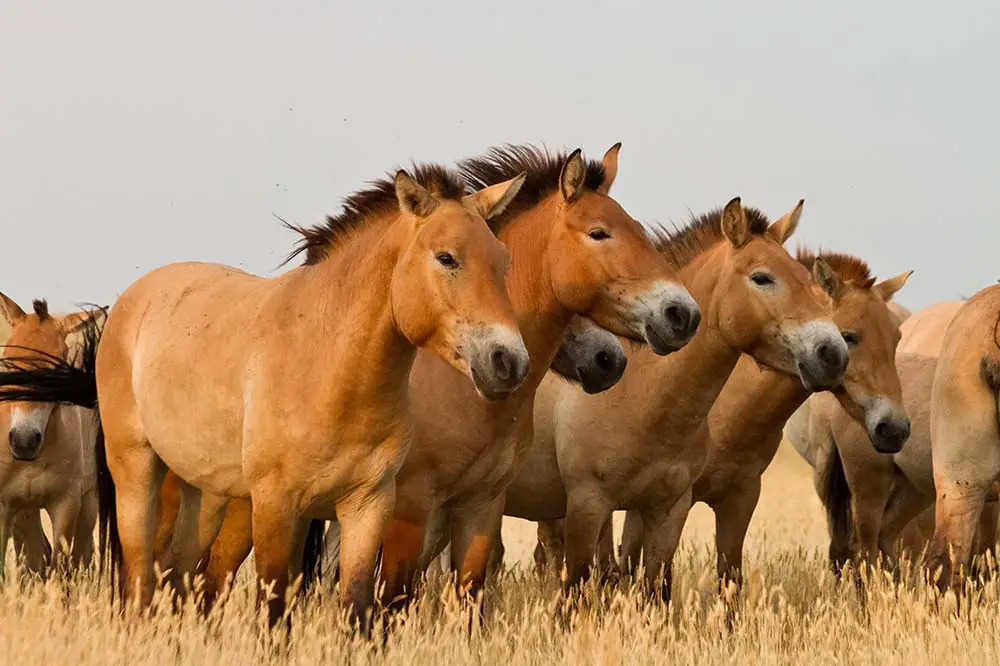
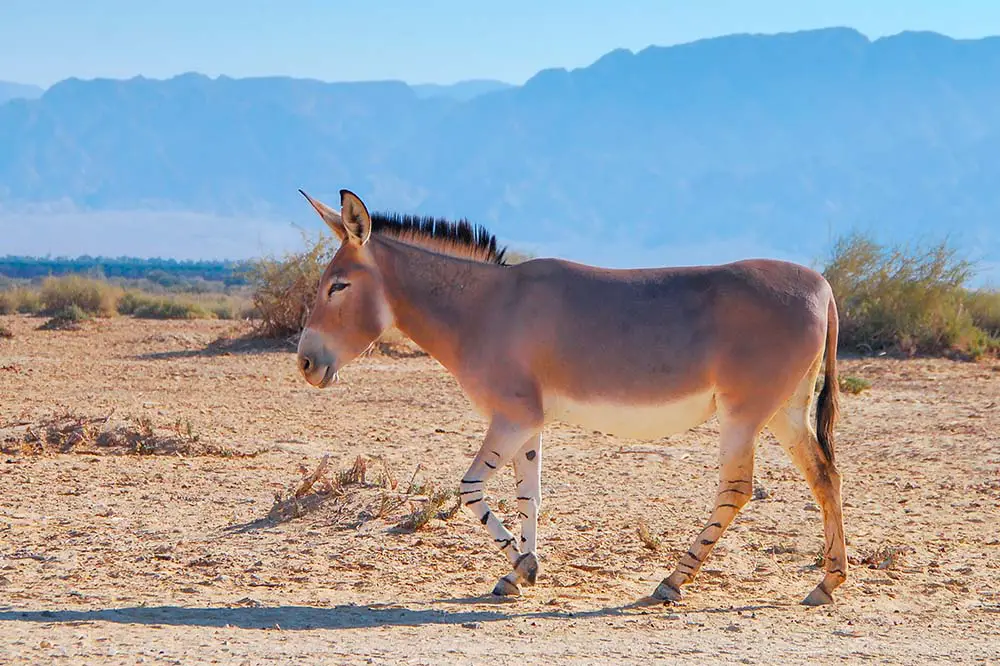
Left: Przewalski’s horses | Yantar/Shutterstock & Right: Somali wild ass near Eilat, Israel | Sergei25/Shutterstock
Even Toed Ungulates
Even-toed ungulates are contained within Artiodactyla, which includes camels, giraffes, deer, bovines and whales. They are categorized by having an even number of functional toes, usually 2 or 4 on which they bear their weight. There are well over 200 species of even-toed ungulate in comparison to their odd-toed cousins, who number just 16.
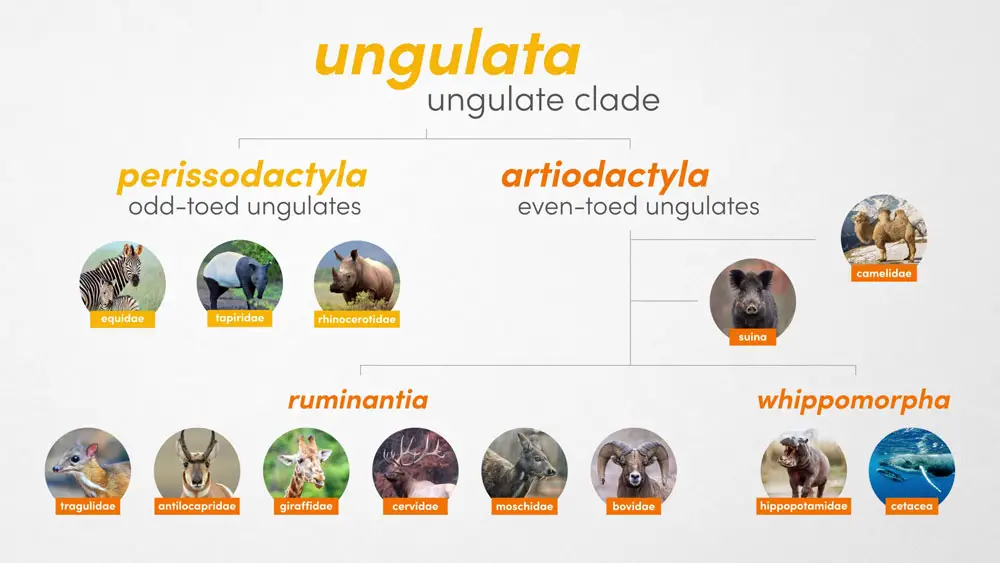
04 – Camelidae | Camels
Camelidae contains 7 species; three in the Camelus genus and 4 in the Lama genus. These creatures once roamed much of Eurasia and North America but are now found natively in two separate areas, the Camelus genus being found throughout North Africa and the Middle East (with dromedary camels also being introduced to Australia in the 1840s) and the Lama genus being found in South America.
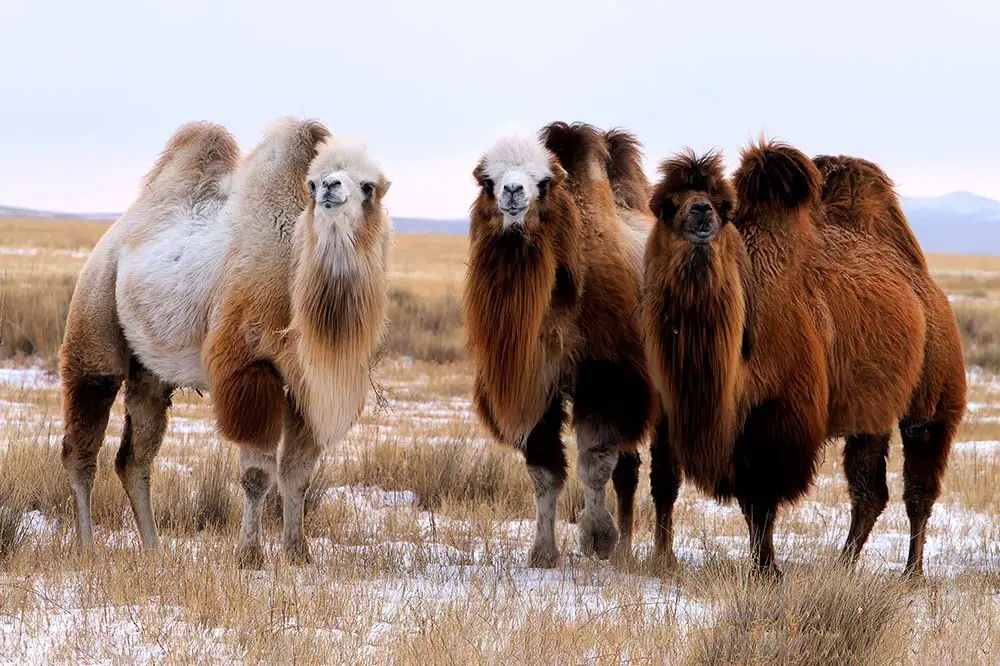
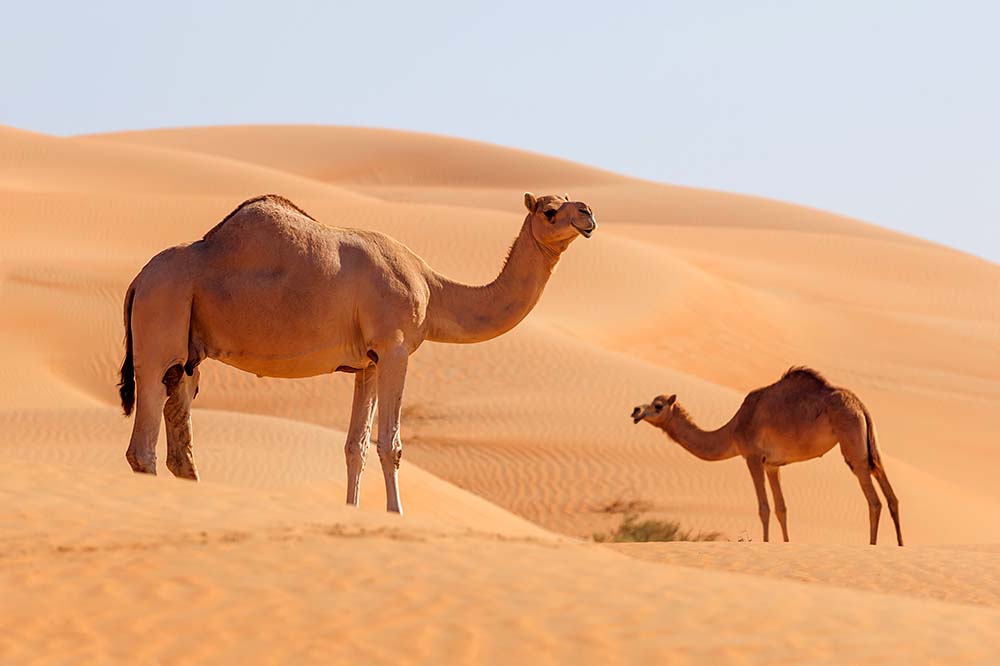
Left: The Bactrian camel | Alex Tumee/Shutterstock & Right: Two dromedary camels in the desert | Vinnikava Viktoryia/Shutterstock
The wild Bactrian camel and the enormous Bactrian camel, which can weigh up to 2,200 lbs (1,000kg) are much more similar in appearance to Lamas. They are found on the frigid steppes of Central Asia and have two large humps. The slender Dromedary camel, also known as the Arabian camel, is built for the desert, weighing around half the weight and exhibiting just a single hump. The four species in the Lama genus, the Llama, Alpaca, Vicuña and Guanaco are very similar both in appearance and range, being found at the southern tip of the Andes mountain range with only Guanacos living further south.
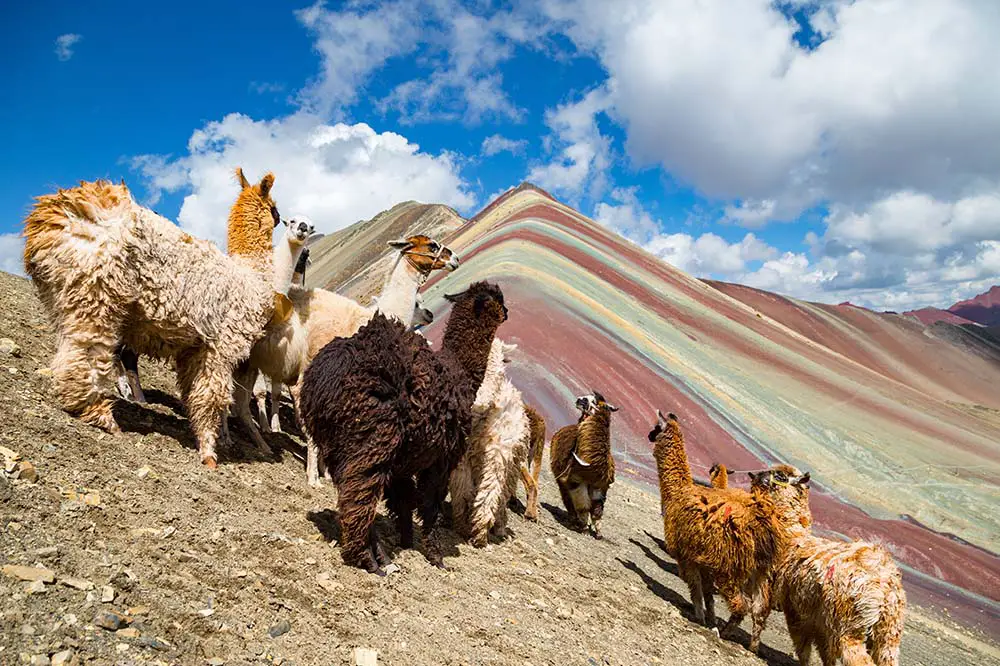
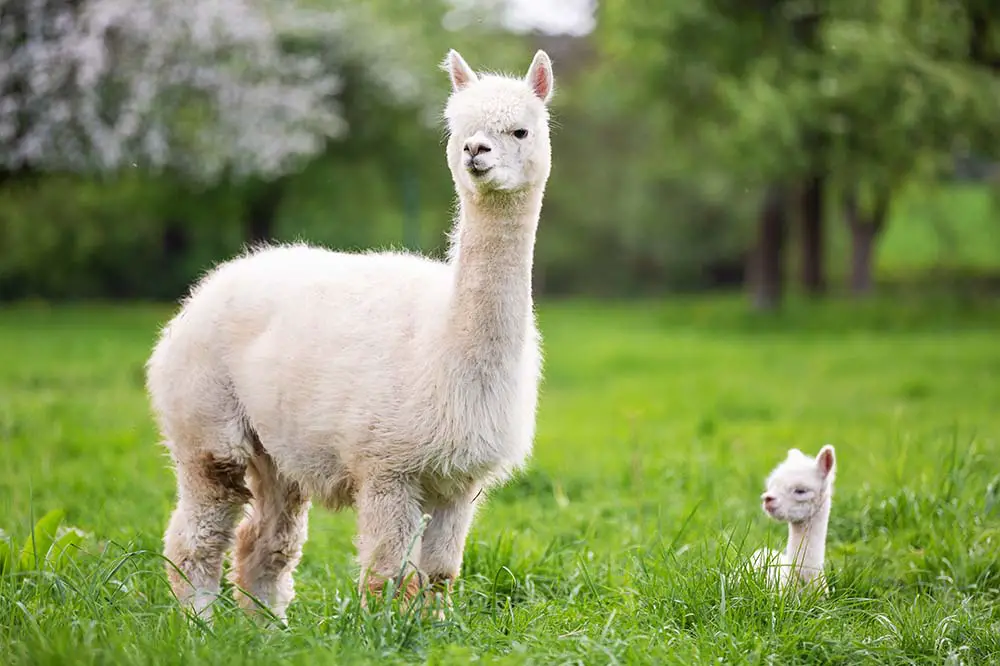
Left: Llamas at Vinicunca Mountain in Peru | Diego Vargas Nasser/Shutterstock & Right: White alpaca with offspring in South America | fotorince/Shutterstock
05 – Suina | Pigs
Suina is a suborder consisting of two families that we’ll group together: Suidae, which are generally referred to as pigs, contains 6 genera and 18 species and are native to Eurasia and Africa. Tayassuidae contains three monotypic pig-like genera, which are often referred to as New-world pigs, being found in the Americas. Unlike most other even-toed ungulates, pigs are omnivorous, surviving off both plant matter and meat. Wild bores generally weigh a maximum of 770lb (350kg) but have been recorded at a staggering 1,000lbs.
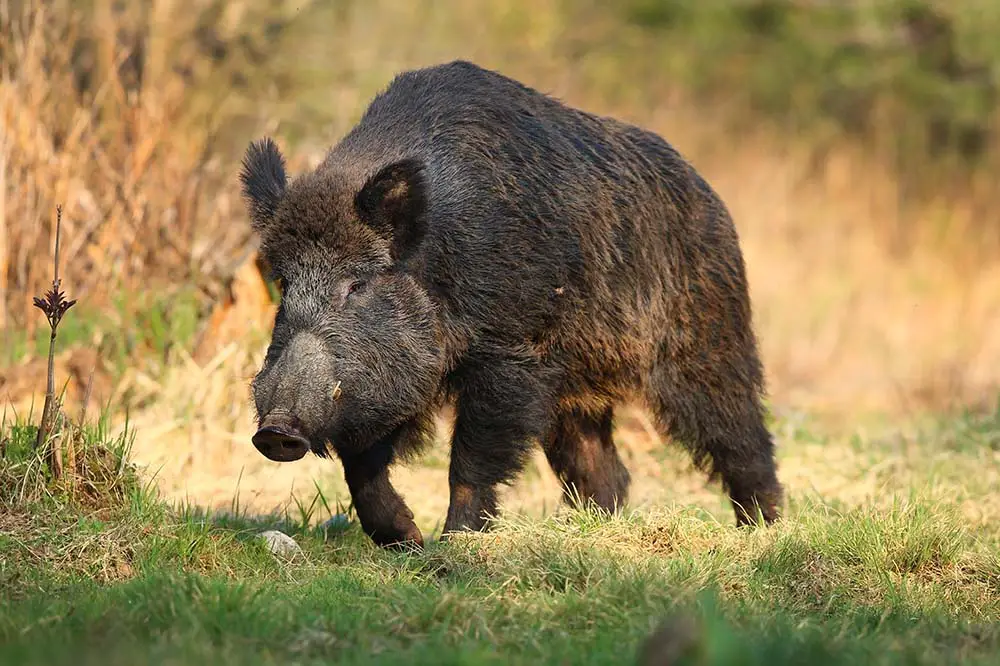
Conversely, the smallest species of pig is the pygmy hog, which stands just 10 inches high (25cm) weighs just 12 lbs (5.4kg) and are highly endangered with an estimated 250 individuals remaining in the wild. One of the most interesting features of wild pigs is their tusks, although they are not present in all individuals. Babirusa males have two sets of tusks, one protruding from the upper jaw and one from the lower, which if they’re not maintained by grinding, can grow so long that they pierce the skull of the individual. Perhaps the most well-known pig is Pumbaa, a happy-go-lucky warthog from Disney’s Lion King.
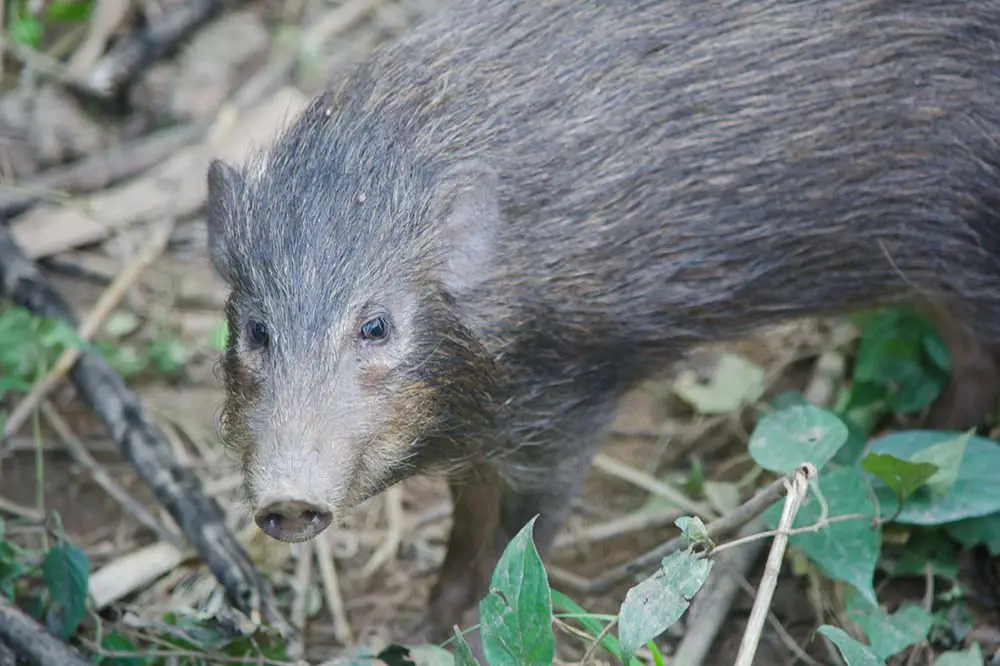
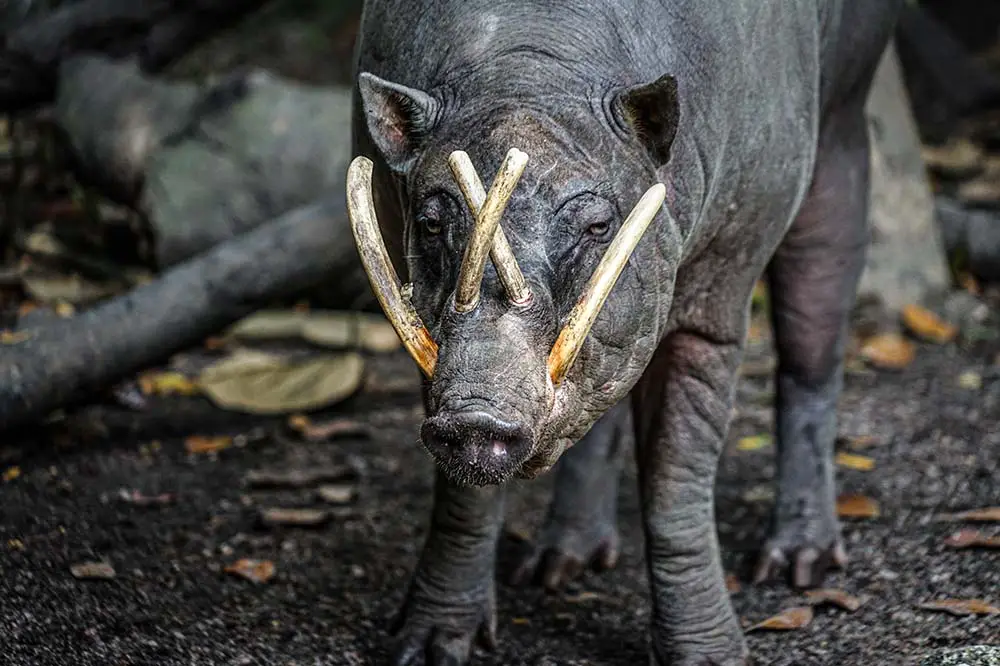
Left: Pygmy hog | Yvdalmia/Shutterstock & Right: Babirusa male | Makoto_Honda/Shutterstock
Cetruminantia Split & Whippomorpha
While Camelidae and Suina were the first two groups to split from the main pack, the next split is by far the most interesting. The clade Cetruminantia contains two suborders: Ruminantia, which are all fairly similar and include giraffes, deer and bovines such as bison and wildebeest. Whippomorpha on the other hand contains both whales and hippos and is thought to have diverged around 59 million years ago, with hippos then diverging from whales around 55 million years ago.
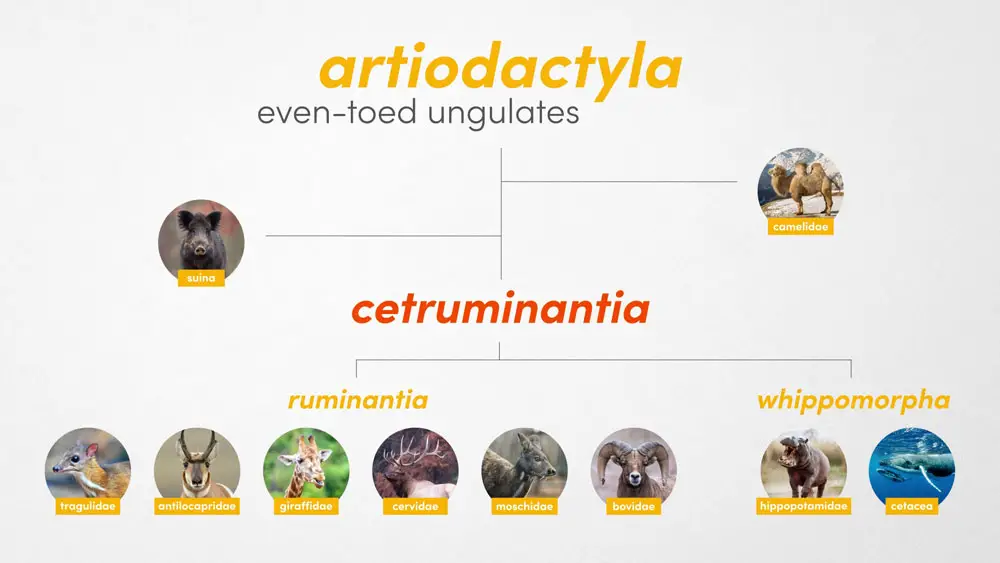
06 – Cetacea | Whales
The members of Cetacea, whales are mammals and are more closely related to giraffes than they are to fish. This means that they breathe air, females produce milk, which is suckled by their young, and they have hair, the follicles of which are perhaps the most noticeable on humpback whales. There are over 80 species of whale, which can be broadly categorized into toothed whales, including dolphins, porpoises and orcas, and baleen whales, which includes grey whales and right whales.
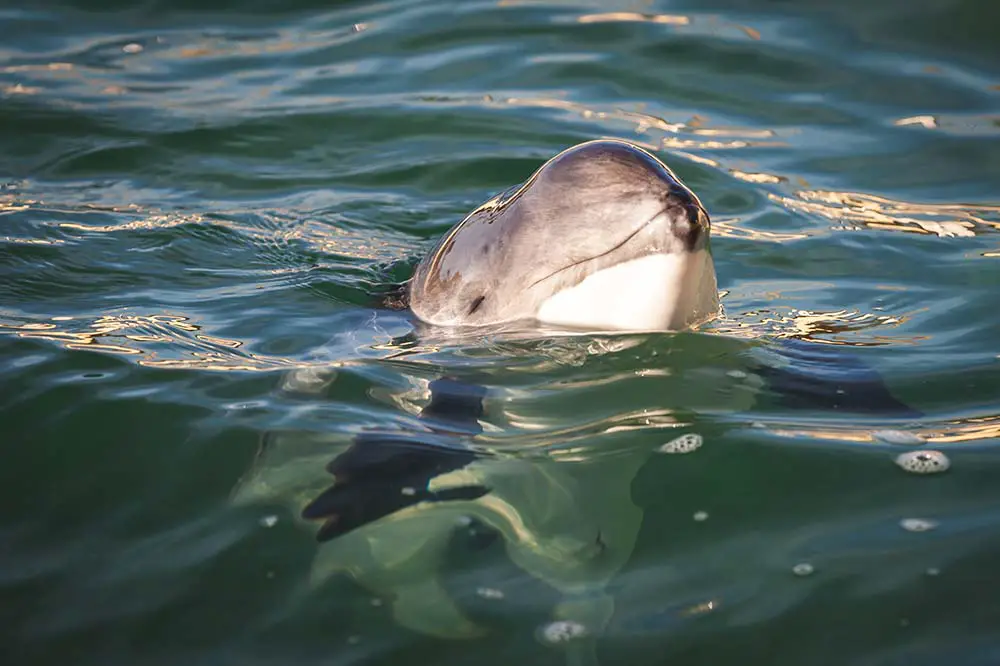
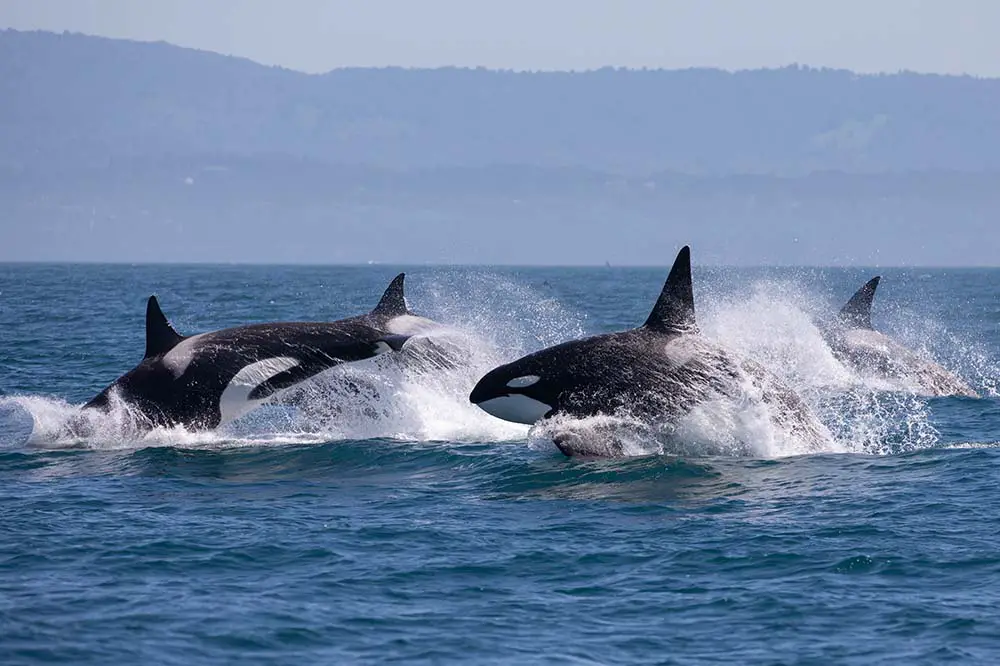
Left: A happy porpoise | Simone Janssen/Shutterstock & Right: A pod of killer whales | Tory Kallman/Shutterstock
One of the whale’s most impressive traits is breaching, which they do to rid themselves of parasites; humpback whales can weigh up to 30 tonnes and can almost breach their entire bodies out of the water. Even bigger still is the blue whale, which can weigh close to 200 tonnes and rarely ever breach due to the energy that would be required to do so! A group of whales is called a pod and usually consist of up to 30 animals, although this number can be larger, especially in the smaller toothed whales who band together for protection.
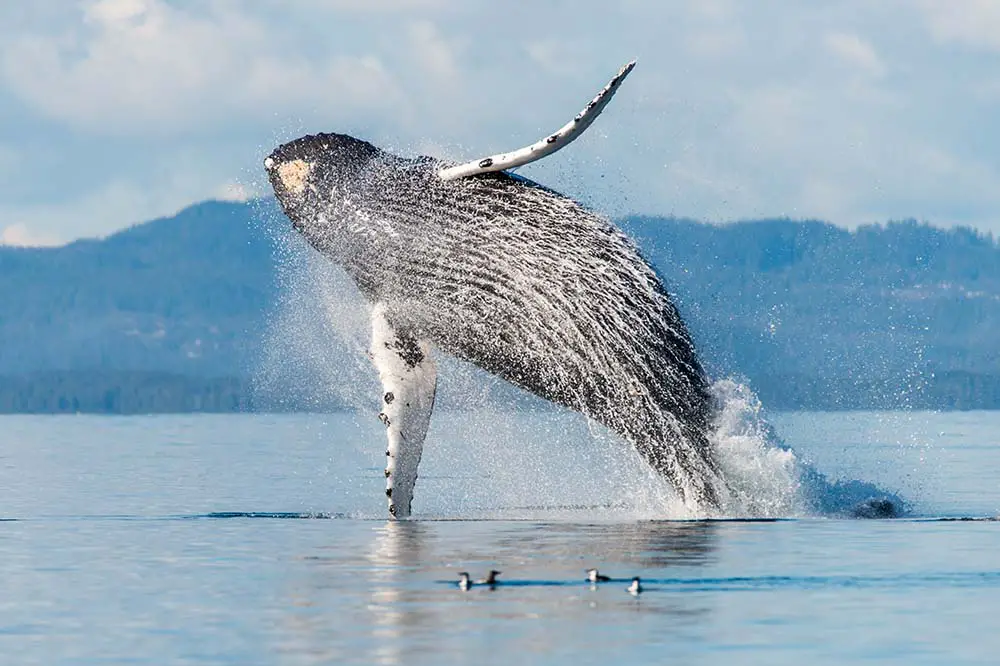
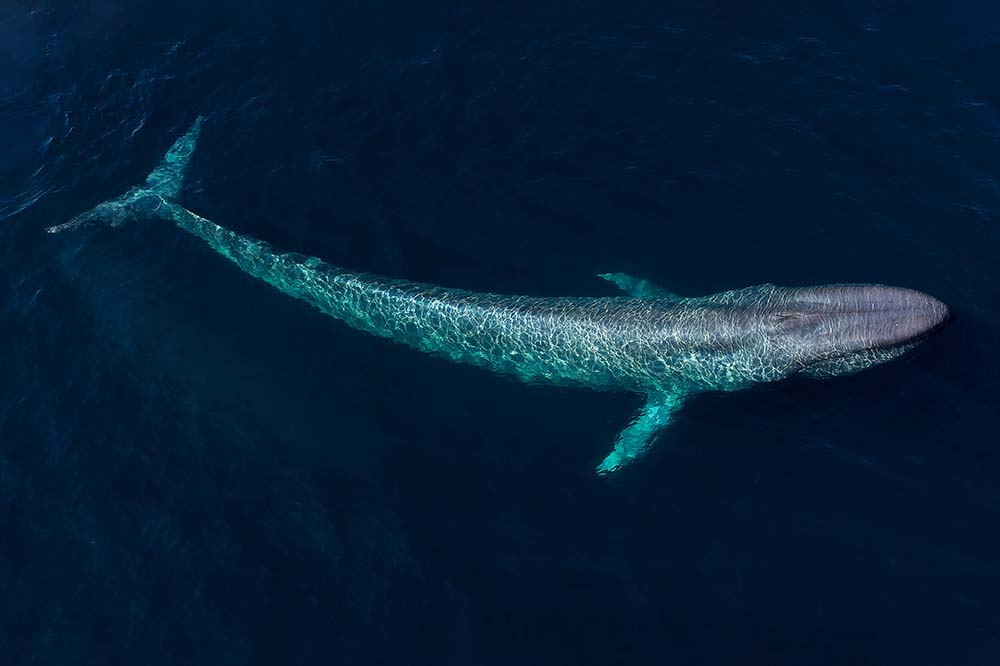
Left: Humpback whale breaches in the Broughton Archipelago, British Columbia, Canada | William Drumm/Shutterstock & Right: Blue whale in Monterey Bay, California | Chase Dekker/Shutterstock
07 – Hippopotamidae | Hippos
Hippos are the closest relatives to whales but are thought of as semi-aquatic mammals, spending most of their day in the water keeping cool and exiting only at dusk to graze. There are only two species within Hippopotamidae, both of which are found in Africa. The common hippo is found throughout much of sub-Saharan Africa and the pygmy hippo, which is found in West Africa. The common hippopotamus can best be described as gigantic! They are the third-largest land mammal after the elephant and the rhino, weighing upwards of 6,600 lbs (3,000 kg) in the wild but have reached almost 10,000lbs (4,500kg) in captivity!
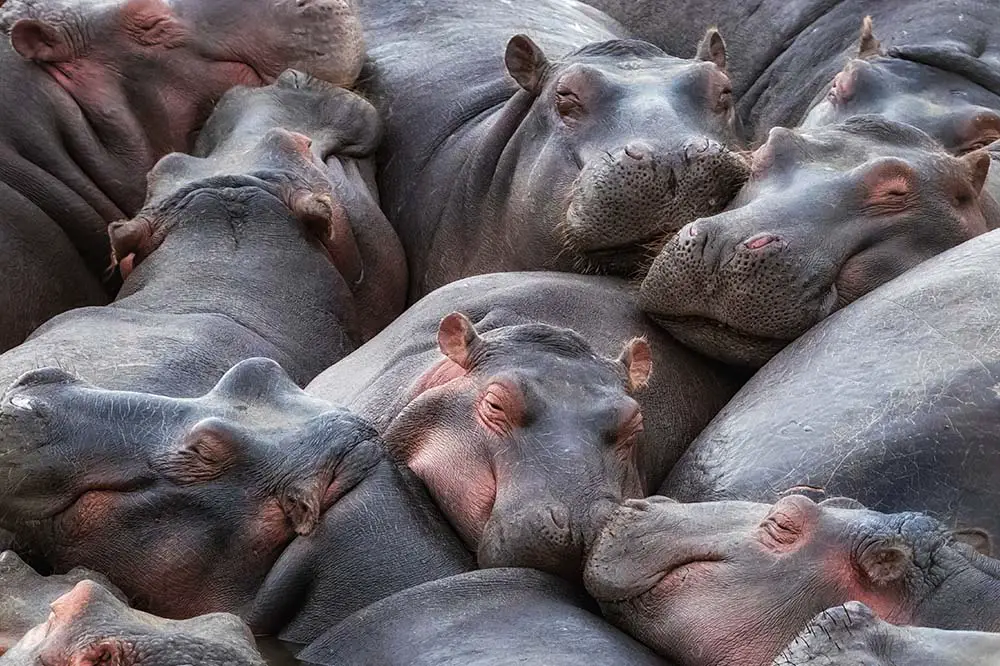
The pygmy hippo is significantly smaller weighing up to 600 lbs (275kg). Both species are largely herbivorous but have been known to consume meat very occasionally, although their stomachs are not made for doing so. They are extremely territorial and are known as the deadliest mammal in Africa, responsible for 3,000 deaths per year, which is 10 times that of the Nile crocodile.
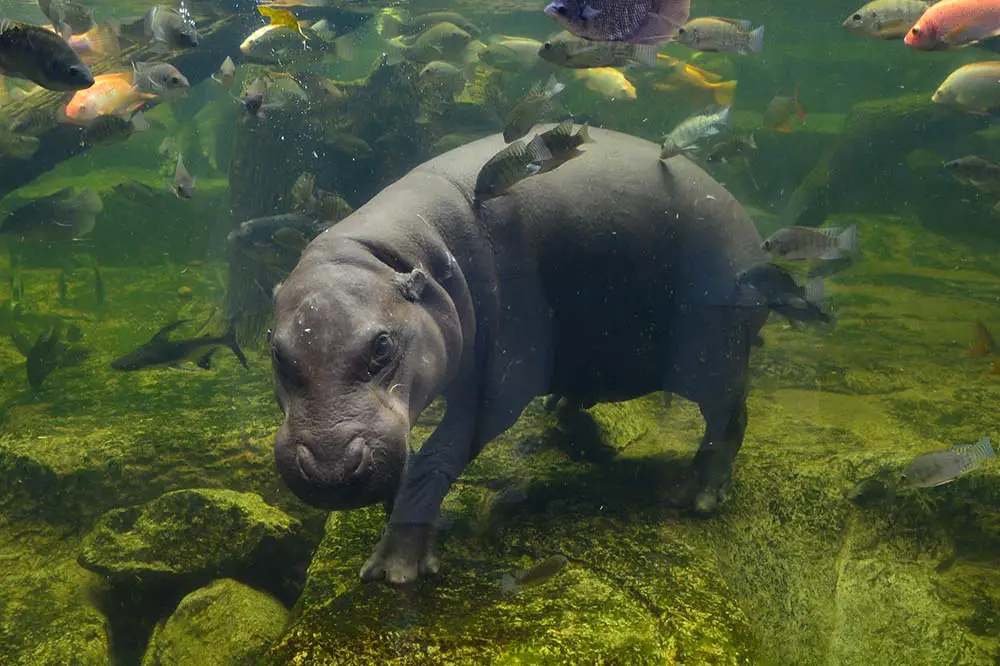
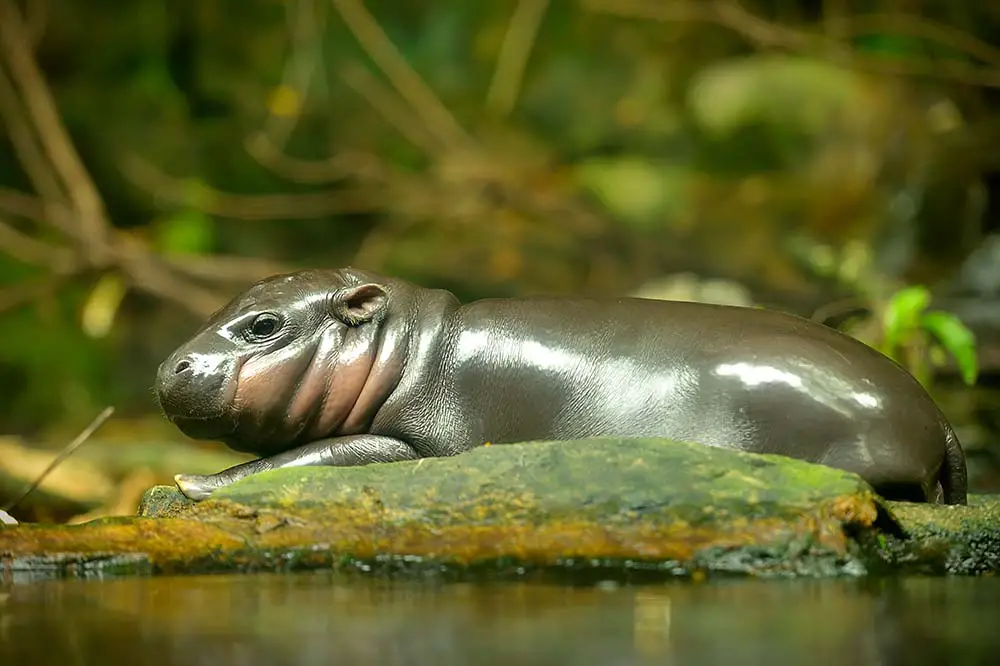
Left: Pygmy hippopotamus underwater | Tatiana Grozetskaya/Shutterstock & Right: Pygmy hippopotamus calf | Tristan Tan/Shutterstock
Ruminantia
Ruminantia is the last group of ungulates we’ll look at. Ruminants are grazing mammals whose stomachs are made up of 4 parts, allowing them to consume their food through a fascinating 2-part process known as rumination! Initially, these animals chew and swallow their food, which is fermented in the first chamber of their stomach known as the rumen and passed to the reticulum which allows it to be regurgitated in the form of cuds. These cuds are then chewed again, swallowed and passed to the third chamber, the omasum for further processing before ending up in the true stomach, the abomasum.
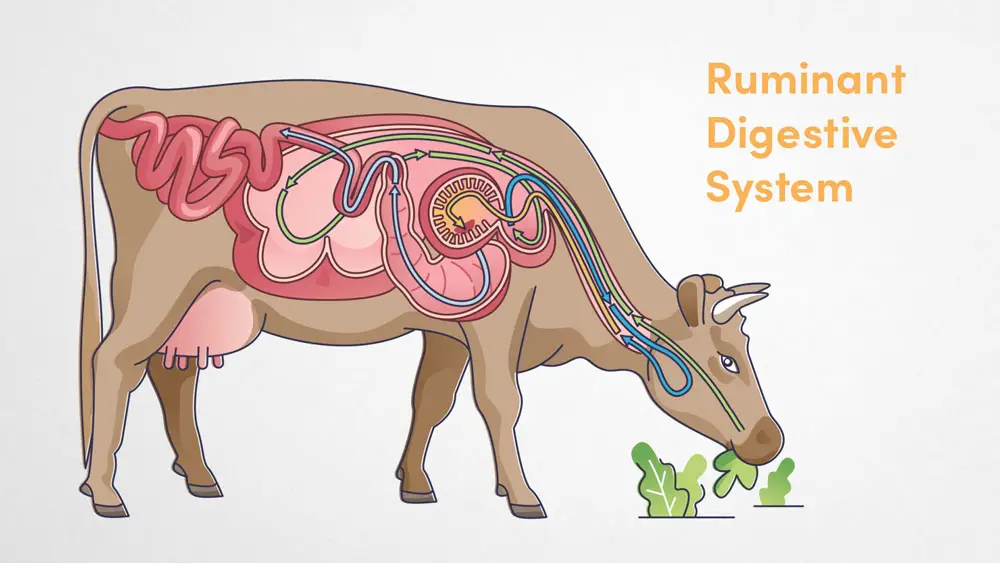
08 – Tragulidae | Mouse Deer
The most distant ruminants are members of the Tragulidae family, which contains 10 species of mouse deer. 9 species are found in southeast Asia with the remaining single species located in Africa. As adorable as they sound, the Java mouse-deer is the smallest living ungulate, weighing just 2-4lbs (1-2kg). They exist on the forest floor and are mainly herbivorous, although they have been known to eat invertebrates and sometimes carrion. Most species have a light brown coat with white highlights around the neck but some species are spotted and the Philippine mouse-deer is much darker.
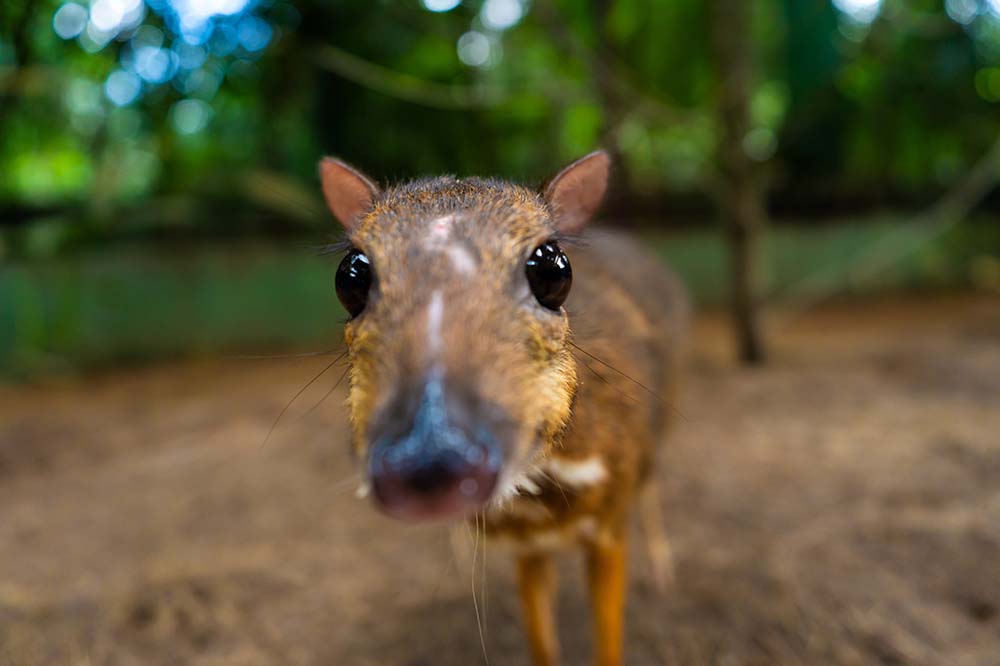
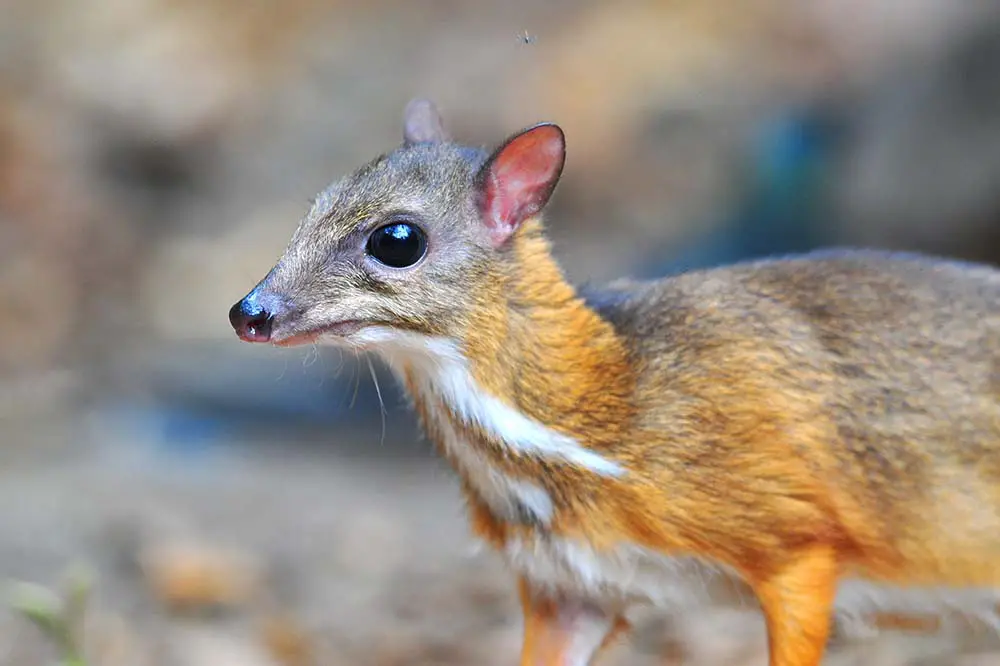
Left: Lesser mouse deer | Try_my_best/Shutterstock & Right: Close up of a mouse deer | Independent birds/Shutterstock
09 – Antilocapridae | Pronghorn
The Antilocapridae family contains only a single species, the pronghorn, which is closely related to the Giraffe but found on the other side of the planet in North America as far north as Saskatchewan and Alberta in Canada and as far south as Northern Mexico. They exhibit a striking colouration with a white belly, rump and striped neck and a dark area on the front of their face. They are often called the American antelope and being preyed upon by cougars, wolves, coyotes and bears have evolved to be the fastest land mammal in the Americas, reaching up to 90km/h (55 mph).
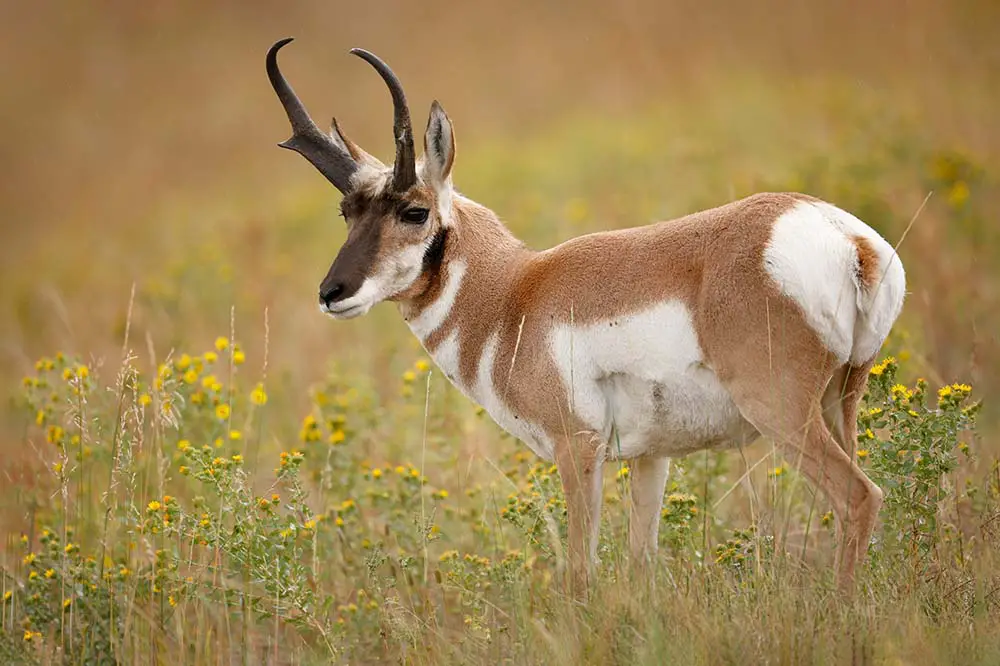
10 – Giraffidae | Giraffes
Giraffidae contains two of the most unique animals on the planet, the giraffe and the Okapi, which is also known as the forest giraffe or zebra giraffe. Giraffes are the tallest mammal on earth with the loftiest individuals reaching a height of almost 19ft (18.70 ft / 5.7 m) and can weigh over 4,000 lbs (4250 lbs /1930 kg). They use this height to feast on the foliage of tall Acacia trees that are not accessible to the other herbivores of the savannah. The taxonomy of the giraffe is highly debated, regardless they display a wide range of fur patterns between species or subspecies with some giraffes showing clearly defined patches and others with a more broken or blotched pattern.
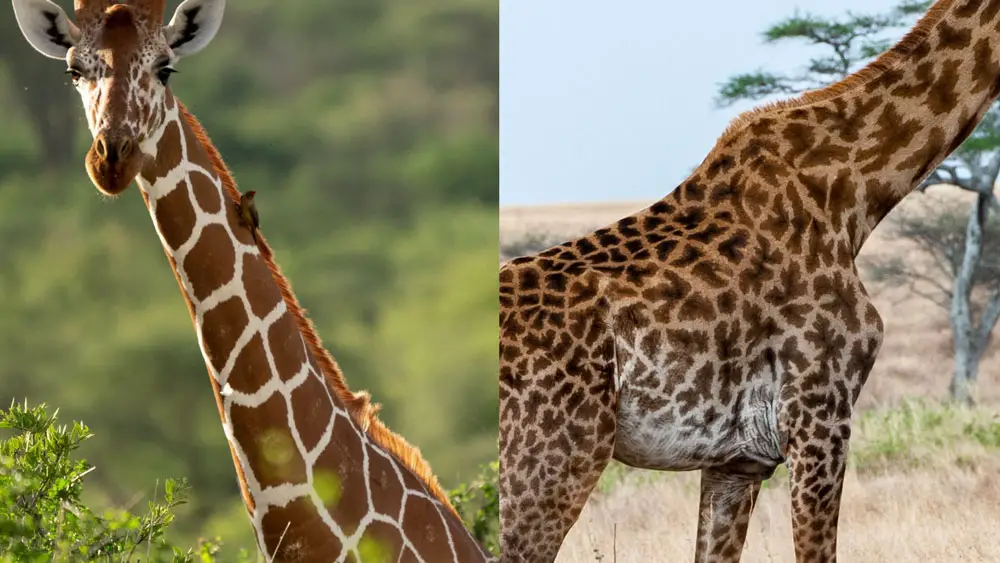
While giraffes are found throughout much of sub-Saharan Africa, the okapi is located solely in the Congo where they are endangered with an estimated 22,000 remaining in the wild. Okapi have long tongues used to select vegetation, in addition to cleaning their ears. They have a very unique appearance with a deep brown coat and white and black striped legs used for camouflage.
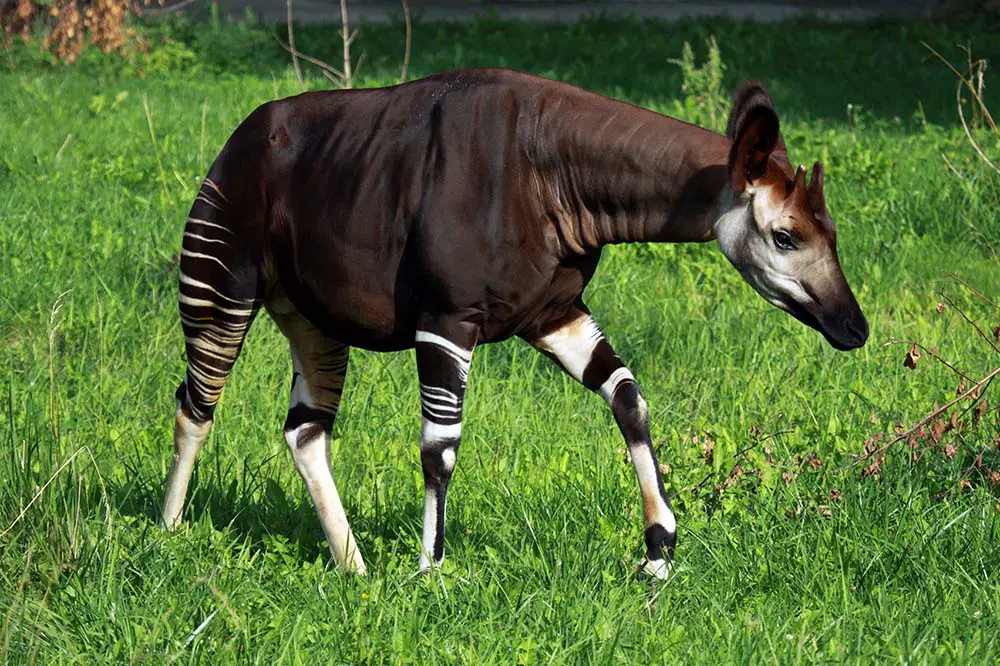
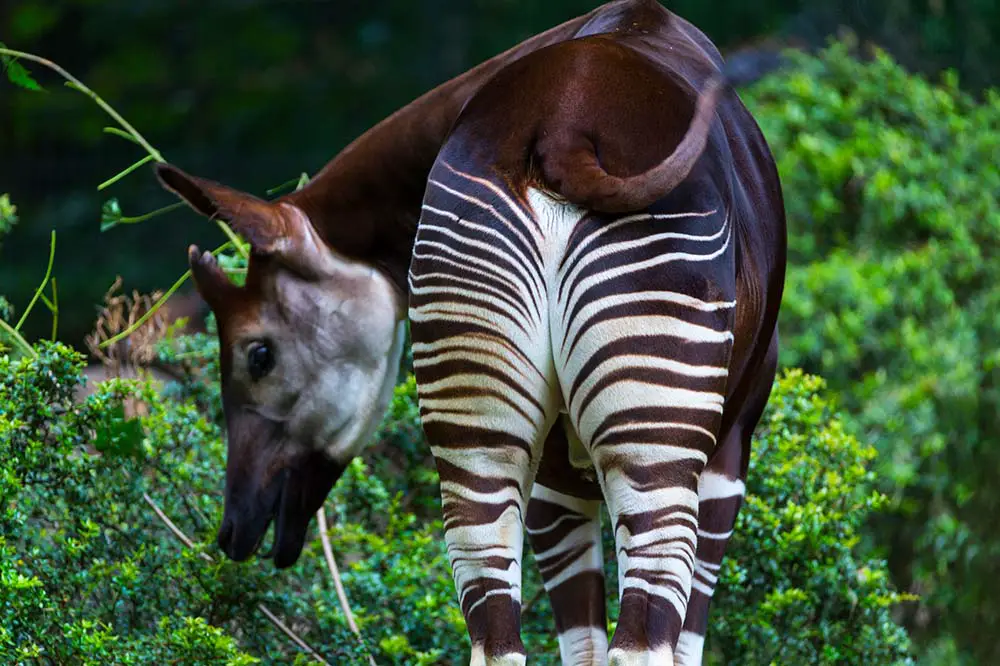
The beautiful okapi. Left: Michal Sloviak/Shutterstock & Right: Juan Carlos Munoz/Shutterstock
11 – Cervidae | Deer
Cervidae is a much larger family with 47 species. They are more commonly known as deer and are well-known for the antlers that are present on males from all but one species and also on female caribou. Deer are split into two main subfamilies, old-world deer, which are found mostly throughout Eurasia and new world deer found mostly in the Americas although there is some crossover between the two. A third subfamily does exist, Hydropotinae, which contains a single species, the Chinese water deer.
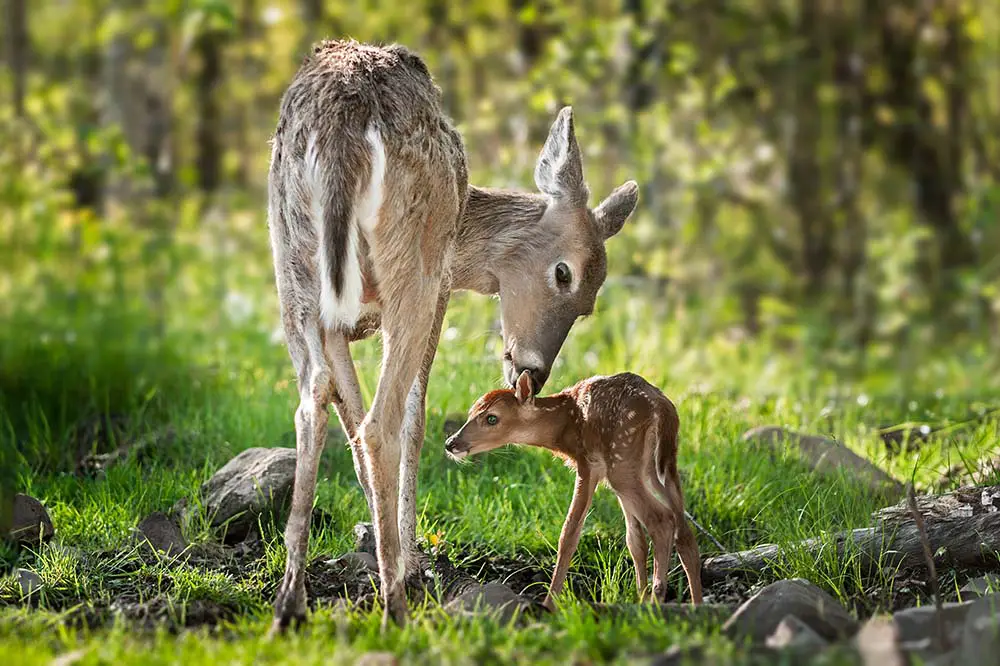
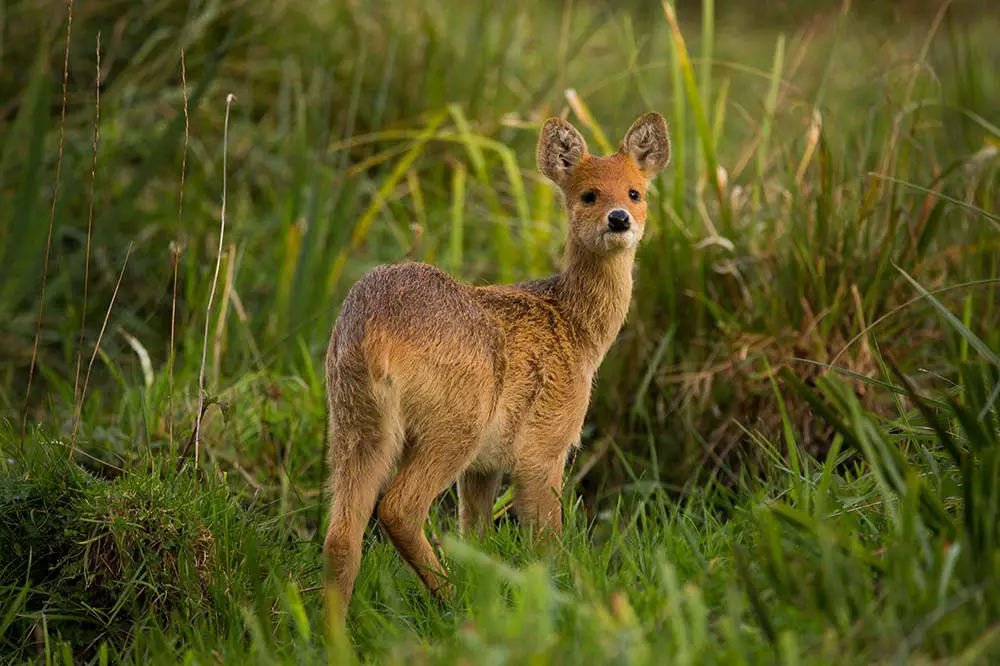
Left: Mother white-tailed deer with fawn | Holly Kuchera/Shutterstock & Right: Chinese water deer | Shaun Whitmore/Shutterstock
The largest of the cervids is the moose, with the largest individual ever recorded in Alaska weighing a staggering 1800lbs (816 kg) and standing over 7ft at the shoulder. Another particularly beautiful species is the Chital deer from India that exhibit a rich brown coat with white dots. Deer are one of many types of animal whose mating season is known as the rut, which comes from the word rugire, meaning “to roar”. Rutting takes place during the late fall and early winter and sees males compete aggressively for their mates. Males start by making a loud call to ward off other males and will battle antler to antler if this isn’t sufficient.
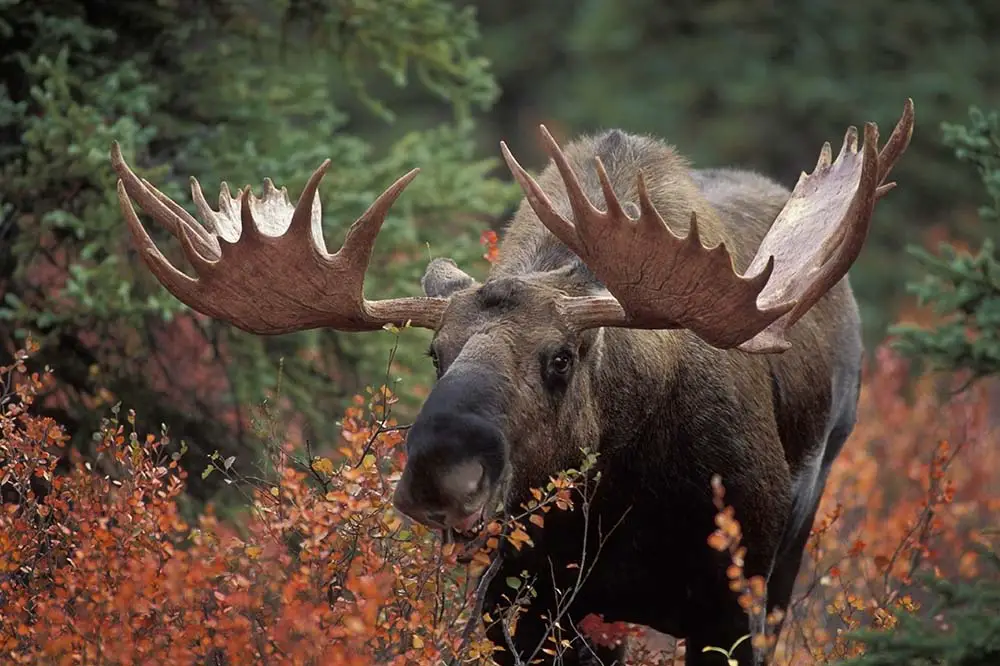
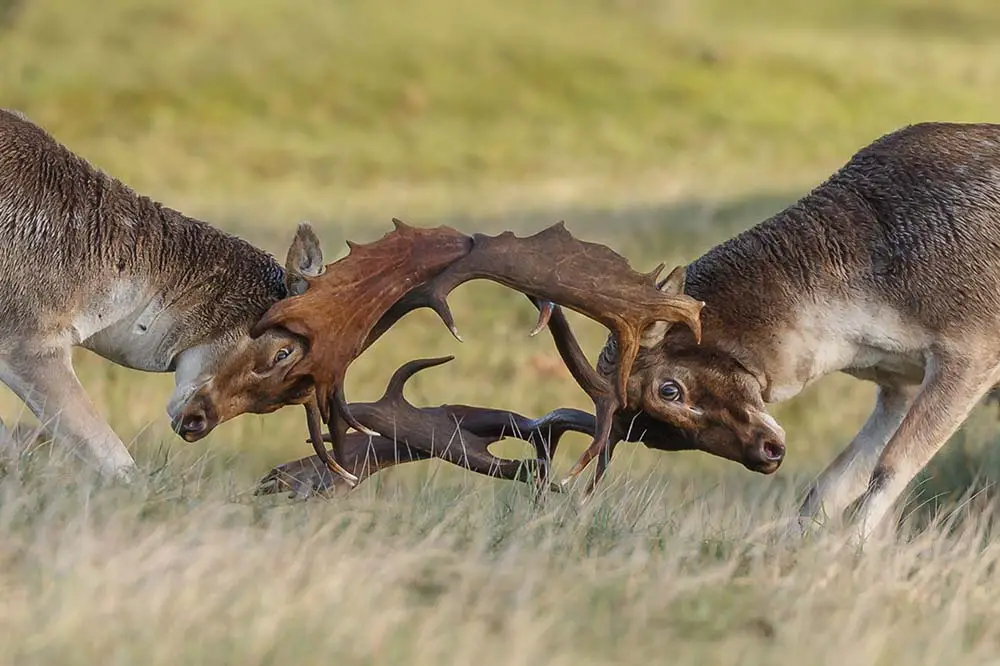
Left: Bull moose in Denali National Park, Alaska | NancyS/Shutterstock & Right: Two male fallow deer during the rut | Menno Schaefer/Shutterstock
12 – Moschidae | Musk Deer
Moschidae contains a single genus, which oddly enough is more closely related to the bovines that we’ll discuss next than it is to the members of Cervidae. There are 7 species found throughout southern Asia, particularly in the Himalayan region and one species, the Siberian musk deer found throughout eastern Russia and northern China. There are relatively small, weighing no more than around 37lbs (17kg) and are a hardy species, well adapted for their frigid environment. Rather than antlers, males’ defining feature is the presence of tusks, which protrude from their upper jaw bone.
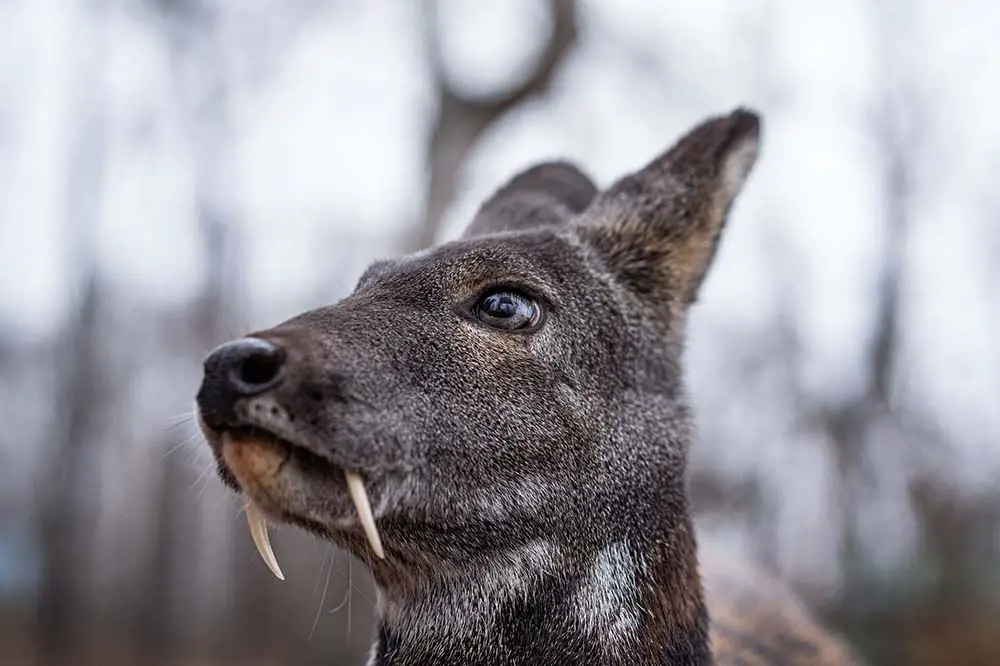
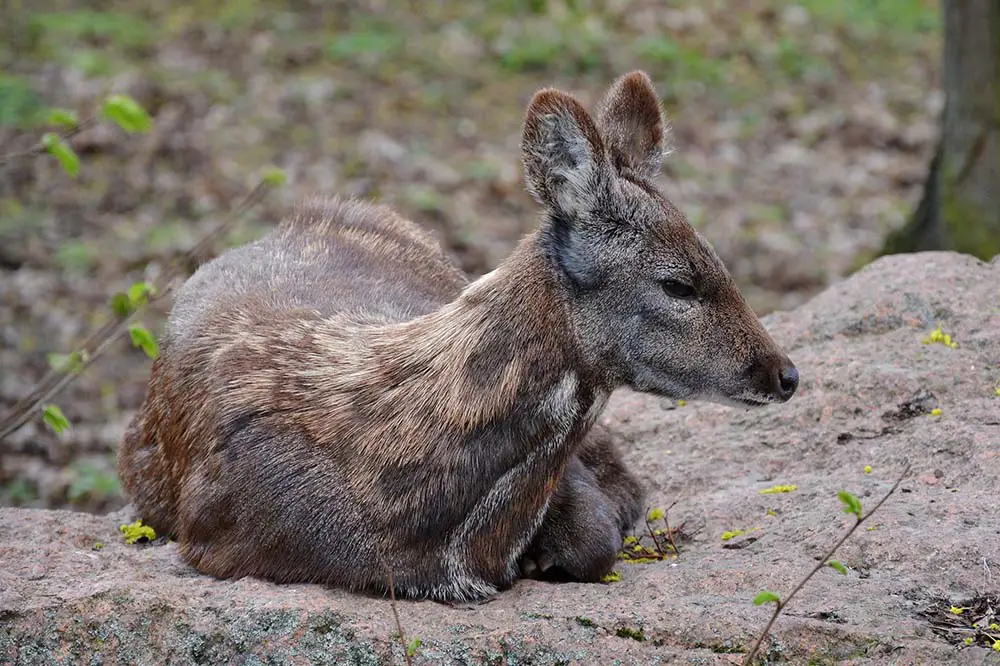
Left: Male Siberian musk deer | Suvorov Alex/Shutterstock & Right: Female Siberian musk deer | Damson/Shutterstock
13 – Bovidae | Bovids
Bovidae is by far the largest ungulate family with 143 extant species. This diverse group of animals includes some of the largest on the planet including the Gaur, also known as the Indian bison (3,310zlb / 1,500kg), Africa’s wild water buffalo (2,600lb / 1,200kg), the North American bison (3,090lb / 1,400kg) and the Wild yak (2,600lb / 1,200kg). All male bovines possess horns, which are also present on many females. Unlike the antlers of the deer family, these horns do not branch but do twist and spiral to create many fascinating shapes.
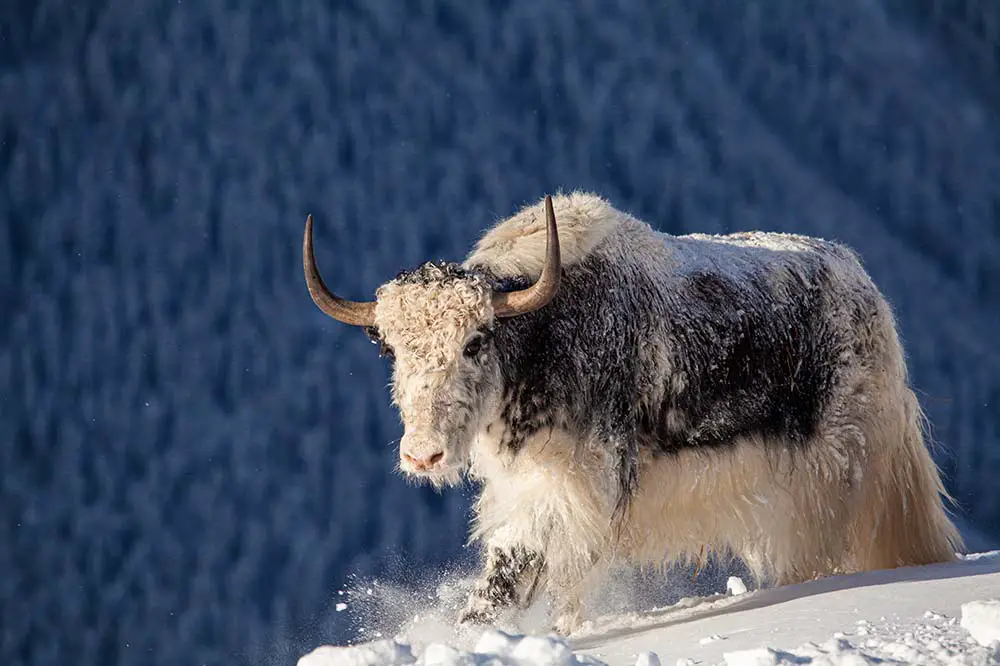
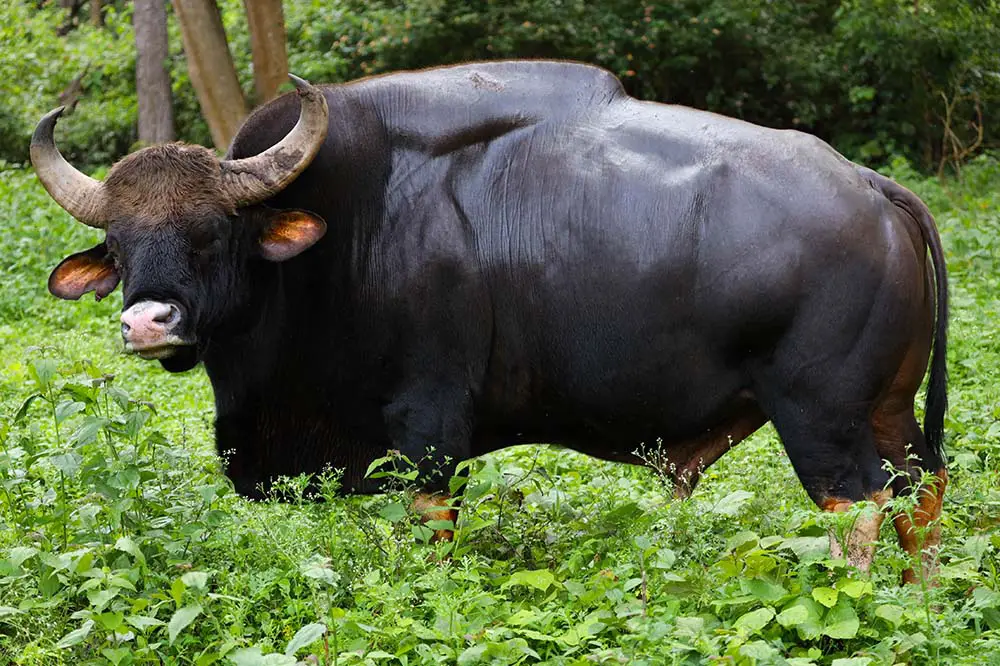
Left: Wild yak in the mountains of Nepal | Andy Shell/Shutterstock & Right: Indian Gaur in Bandipur National Park | Bobbys gallery/Shutterstock
Some of the most interesting are that of the addax antelope, the Giant eland, the East African oryx and the sturdy curled horns of the Bighorn sheep. Many bovids form large groups for protection; herds of bison can reach almost 5,000 on the grasslands of North America and famously in Africa, alongside herds of zebra that we discussed first, thousands of blue wildebeest trek in a loop from Kenya’s Massai Mara to areas further south in Tanzania in search of more fertile lands all while dodging crocodiles, lions and other predators.
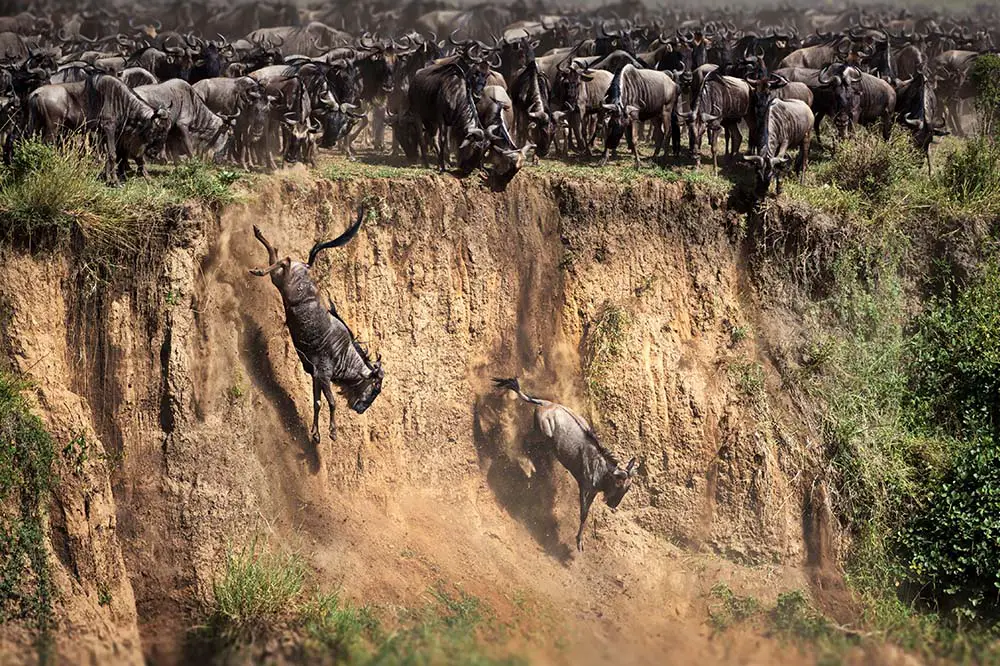
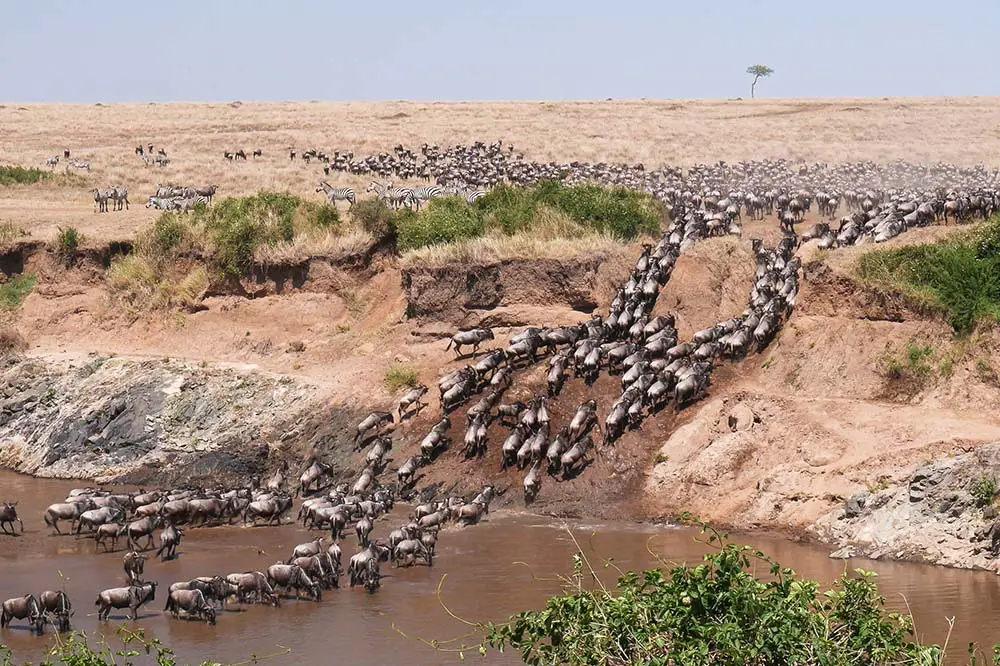
Left: Wildebeest herd navigating a cliff in the Masai Mara, Kenya | Wirestock Creators/Shutterstock & Right: Wildebeest herd crossing the Mara River at the Masai Mara National Reserve, Kenya | crbellette/Shutterstock
Sources
Animal Diversity, Wikipedia, Black and white rhinos, Rhino horn use, Northern white rhino numbers, Black rhino WWF, Western black rhino extinction, Tapirs, Largest domestic horse breeds, Even-toed ungulate definition, Even-toed ungulate definition, Largest and smallest pigs, Babirusa tusk impalement, Whippomorpha divergence from ruminants, Whale characteristics, Whales’ hair, Whale pods, Why do whales breach, Whale breaching, Common hippos’s range, Hippos grazing behaviour, Ruminant digestion, Okapi numbers, Largest ever moose & Deer rutting, Wildebeest migration
